
Self Wellbeing Home Beauty Health WINTER - ISSUE 16 HOLDING SPACE ISSUE THE
From the editor
Why do we need to hold space for ourselves and each other?
The mindful five
As the nights draw in, create an inner sanctuary for body and soul 8
The reading list
Our winter reading list celebrates sharing strength and joy with those around us in order to forge new pathways
Five apps Apps to help your mind wander from worrying thoughts, escaping the everyday, even just for a short while

Leaning into uncertainty
In uncertain times, we need to be a vessel strong enough to hold that uncertainty, for this is where we grow, says Metanoia 16
The art of wintering Winter is an important time for surrender and soulfulness, holding space for us to reflect, retreat and rest, says Emma Johnson
Finding inner safety
Dr Nerina Ramalakhan on why we need to look inside ourselves for reassurance and comfort
Acknowledgement is the medicine Give yourself the gift of truth, says Laura Toop
The unbroken bowl Anne Yazar considers what holding space looks like in everyday life
Strength in numbers Circles of women are powerful things. it's time to come together says Lucy Jones
2 Contents
24
30
36
42
5
6
10
12
16 16
Rising strong
Holding space for your children means taking time to nurture your own inner child 58
Into the light
Modern shaman Jo Bowlby talks to Luciana Bellini about reconnecting with our innate wisdom 62
Finding space in a chaotic world
Nature is a healing, soul-soaringly beautiful space that nourishes us in body and mind. Three women share their personal ritual of communion with nature 72 Silent night

When you flick off a switch, or turn off the radio, the quiet night reveals itself, says Luciana Bellini
A winter’s tale Lift mood and mind with the season’s latest indulgent launches
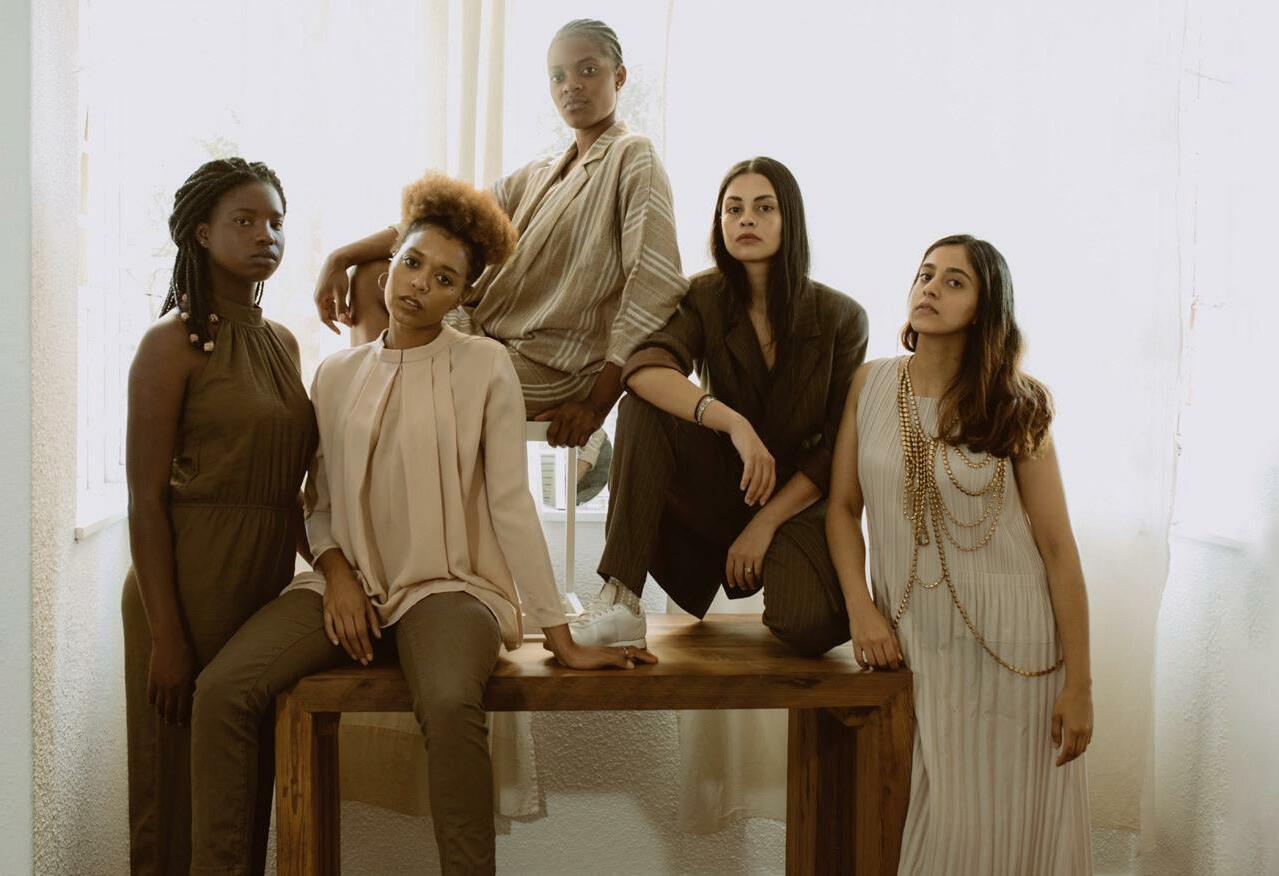

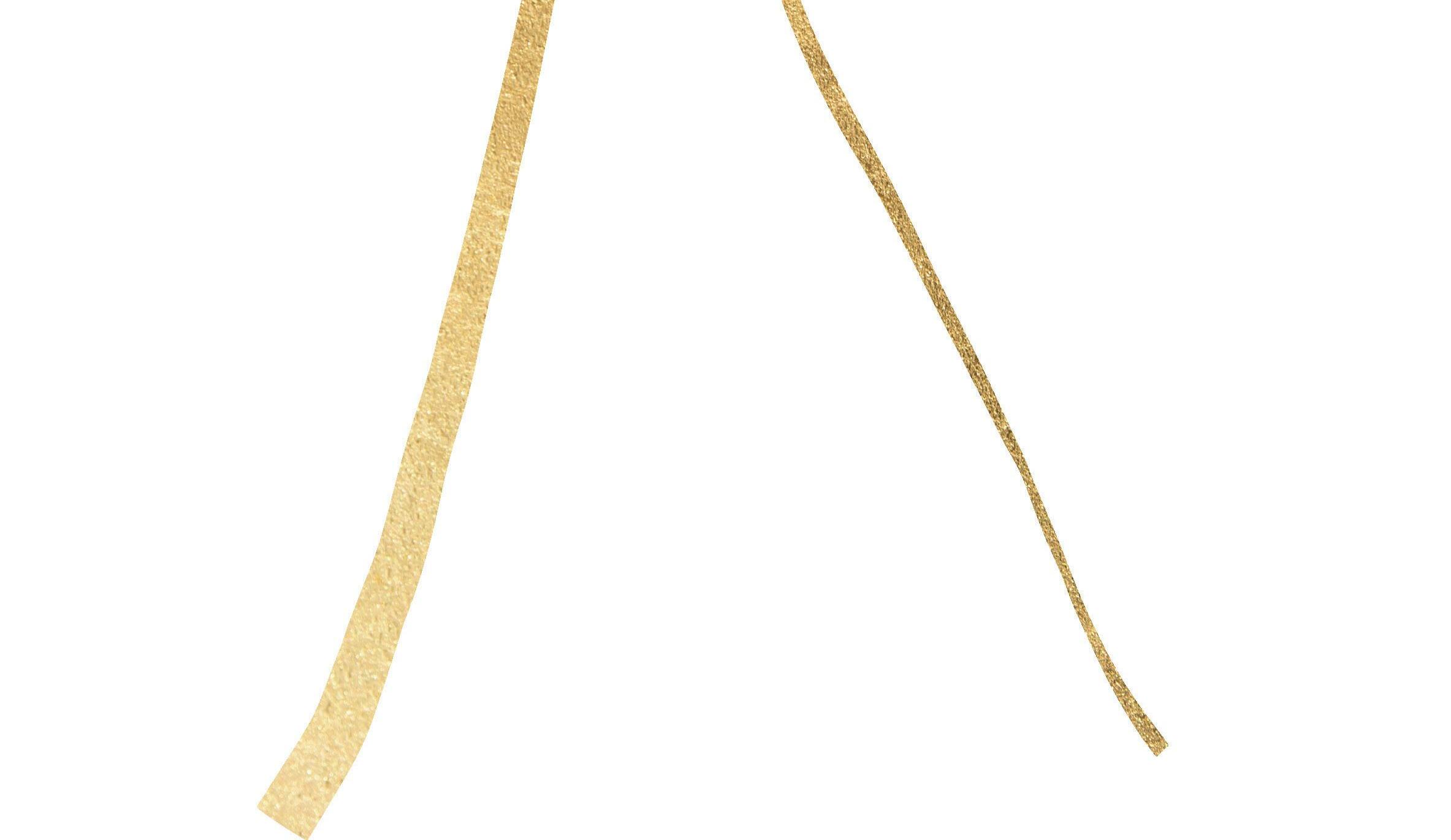
From comfort zone to growth zone
Learning takes place in the stretch zone, says Dr Asma Naheed
A fine line between chaos and change
When you stop fighting change, you see the beauty in acceptance
The boy and the echo A simple reminder that our lives are a reflection of our thoughts
Editor-in-Chief Metanoia
Managing Editor Dr Asma Naheed
3 COVER IMAGE: PEXELS/RFSTUDIO. IMAGES: UNSPLASH/LIAM SIMPSON/ RF STUDIO. PEXELS/GUILLE POZZI
72 42
Editor Elle Blakeman Editorial Assistants Paris Starr Annabelle Spranklen Creative Director Vanessa Grzywacz 50
80
84
88
90
94 Al-Fattah The opener
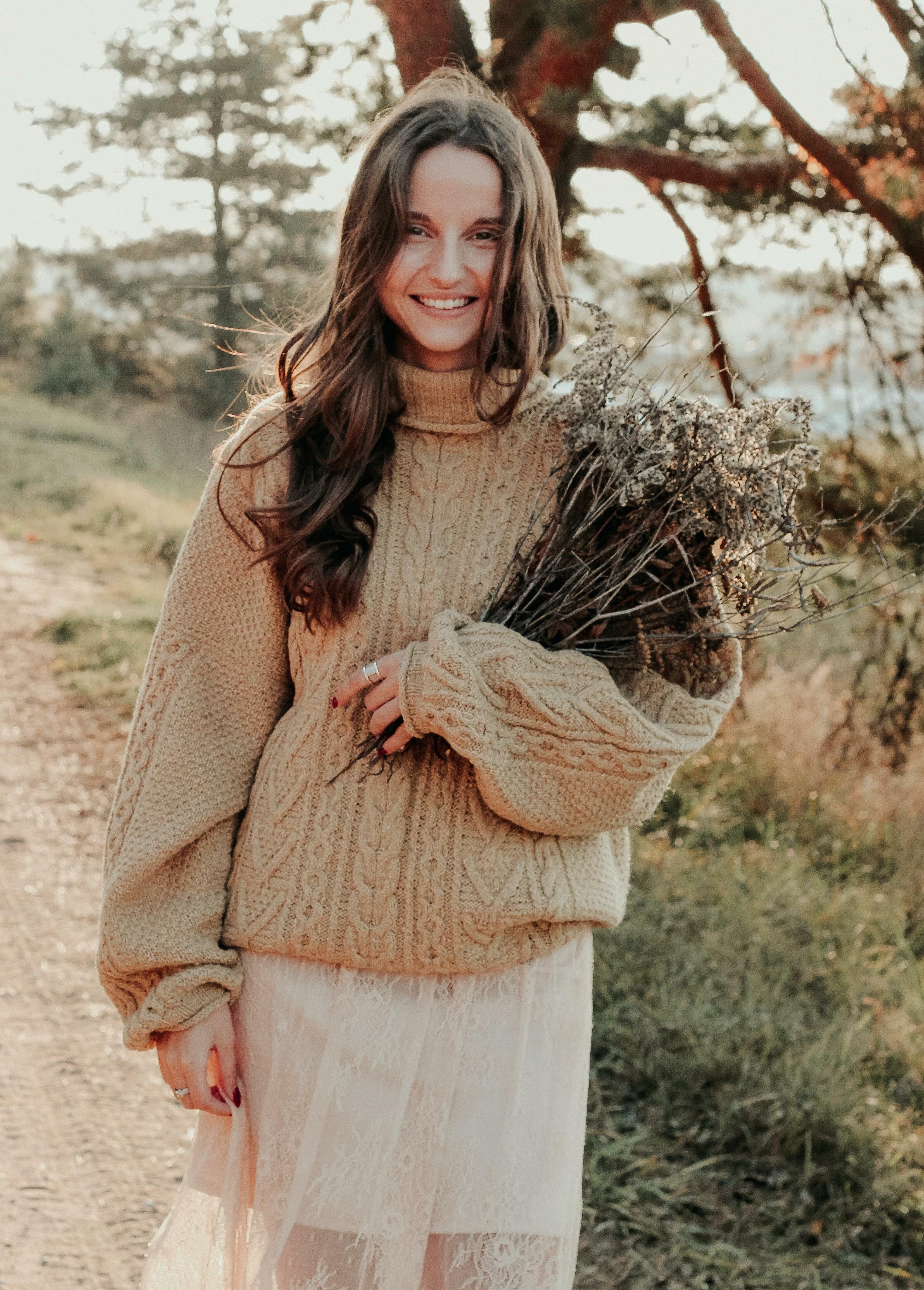
We have innate and precious wisdom inside us all – now is the time to hold space for the wisdom to do its work.
From the editor...
At Kintsugi, we have always written about universal ideas, often tied into the seasons, but expansive enough that they can reach you, whatever moment of life you might find yourself in.
But, for this issue, it felt like the world had reach a crisis point that we wanted to address more fully, more directly. The rising cost of living, war in Ukraine, chaos in Iran, threats of a new cold war, political madness across oceans, catastrophic climate change, flash flooding in Pakistan and Australia, shootings in America, economic collapse in Japan. In a destabilising mix of anxiety, fear and uncertainty, how do we support ourselves? How do we help our children and our loved ones feel safe? How do we find the space needed to articulate what terrifies us, and to support our communities to effect change?
‘So often, when we feel lost, adrift in our lives, our first instinct is to look out into the distance to find the nearest shore,’ writes Brené Brown in Atlas of the Heart. ‘But that shore, that solid ground, is within us. The anchor we are searching for is connection, and it is internal. To form meaningful connections with others, we must first connect with ourselves.’
In this special issue dedicated to the idea of holding space, we want to look at how our inner strength and inner connection can allow us to hold space for ourselves, our friends, our families and our communities. And also to consider the way that the world around us can also offer spaces for safety and reflection.
Winter, says Emma Johnson, holds space for us more than any other season, offering the chance to slow down and feel the comforting blanket of the season wrap itself around us. Luciana Bellini agrees, reminding us how the silent dark of the wintry months can be a powerful opportunity to connect with ourselves.

Thinking about our internal resilience, Dr Nerina Ramlakhan explains what inner safety is and how we can start to support ourselves better, while Laura Toop suggests embracing the gift of acknowledgement to help us make peace with the challenges we are facing. In addition, Sarah Ockwell-Smith suggests some simple ways to hold space at home; modern shaman Jo Bowlby lifts the lid on the innate wisdom in us all; and three writers explain how nature has become the ultimate space for safety, reflection and healing.
‘Winter wisdom is embodied in the archetype of the crone, or hag,’ says Isla Macleod in her book Rituals for Life. ‘As an elder who has walked the old roads, she is able to hold space for the transformation of others, a midwife to our rebirth.’ Our invitation this winter is for you to begin the vital work of holding space, for yourself, your soul and all those around you. We have innate and precious wisdom inside us all – now is the time to hold space for the wisdom to do its work.
Baccarat Rouge
540 Eau de Parfum, £215, Maison Francis Kurkdjian

Sunlight Rose Gold, Emerald and Diamond Necklace, £3,350, Piaget

Malachite Espresso Cup and Saucer, £90, L’Objet

Citrus Blend Aromatic Wash for Hands, £12, Evolve Organic Beauty

DRIFT, Choreographing the Future, £69.95, Phaidon

5 EDITOR'S LETTER ILLUSTRATION: CLYM EVERNDEN. IMAGE: PEXELS/MARYIA PLASHCHYNSKAYA
The Mindful 5
As the nights draw in, create an inner sanctuary for warming your body and soul with our selection of mood-boosting luxuries to turn to this winter
STRIKE A POSE
Short winter days need to get off to a good start which is why we love committing to a daily yoga practice in the cooler months. The new Kintsugi cork yoga mat has been designed to support this practice, with a natural, non-slip surface, cushioned surface for joint support and central line graphic to help you to check your alignment and position throughout. Challenge yourself to do a few minutes every morning and see how your day changes for the better.
Cork yoga mat and bag, £95, Kintsugi

6
SOFTLY DOES IT
There are few better ways to elevate your bedtime routine than with a pair of timeless silk pyjamas. Made with 100 per cent petal-soft silk with opulent mother-of-pearl style buttons and relaxed bottoms, this midnight-blue set from ESPA will have you falling into the deepest slumber. The silk will keep you warm but never too hot and they’re stylish enough that you might even be able to slot them into your everyday wardrobe.

Freya silk pyjamas, £180, ESPA
MINDFUL INTENTIONS
The task of writing down goals, resolutions, thoughts or plans deserves a luxurious incentive to maintain motivation and create a sense of order for our overloaded brains. Designed by English-Italian artist Ciao Chiara, this pretty wellness diary offers a space to reflect on self-care habits, meals, water intake, hours of sleep. You can set feelgood goals and take note of the things you’re grateful for.
Dream foiled wellness journal, £31, Papier

WRAPPED UP
Milan-based brother-sister duo Carlotta and Nicolò Oddi, aka Alanui, pay homage to Native American designs in their cosy knitwear brand. This throw, which took five hours to knit, three hours to assemble and is crafted from the finest cashmere-wool blend, was made for cold nights stretched out on the sofa, surrounded by flickering candles and nose-deep in your favourite novel.
Bandana fringed cashmere-blend jacquard blanket, £2,100, Alanui

SOOTHING SCENT
These days, scented candles are hard-working multihyphenates – they are shelf-decorators, mood-lifters and vibe-setters. This new release from Diptyque is set to be our winter must-have. Describing itself as ‘muted and gentle as a blue night’, it will bathe you in a warming medley of Heliotrope flowers and gentle musk.
Neige scented candle, £65, Diptyque

7
The Reading List
The Light We Carry: Overcoming in Uncertain Times
MICHELLE OBAMA (PENGUIN)
In this follow-up to her bestselling book Becoming, former First Lady Michelle Obama authors a new guide to finding hope and balance in an ever-changing world. Sharing a collection of personal stories on how she’s successfully managed to adapt to change and overcome her own obstacles, while not shying away from subjects of race, gender and visibility, Obama offers practical wisdom and tools on how to face up to fears, find strength in trusted friends and seek bold pathways for progress.
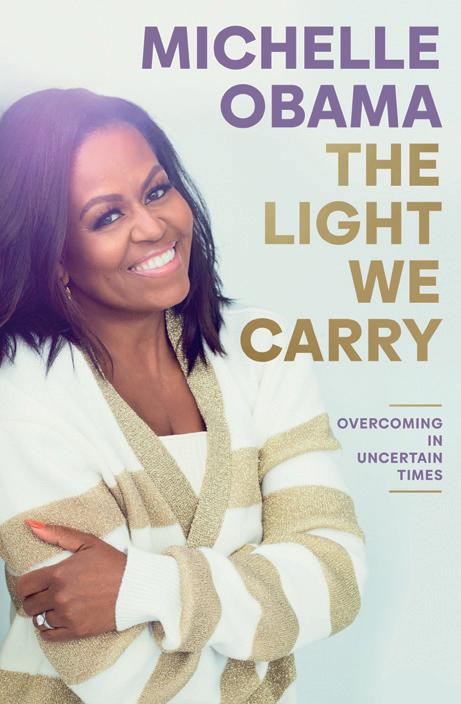
Women Like Us: A Memoir AMANDA PROWSE
 (LITTLE A)
(LITTLE A)
Prowse is an expert at creating fictional worlds and complex characters, but this candid memoir taps into the reallife experiences of a woman in a world where beauty, youth and popularity reign supreme. From her early struggles with low self-esteem, a toxic and selfdestructive relationship with food and her own painful sufferings of grief, baby loss and sexual encounters, this is a raw, and at times, heartbreaking account of how to forge happiness and success after considerable adversity.
Inciting Joy: Essays ROSS GAY (ALGONQUIN)
The deepest joys are those we share –that’s the theme in this collection of beautiful, timely pieces by prize-winning poet Ross Gay. In an era when divisive voices seem to dominate social media and news outlets, Inciting Joy offers a vital alternative: what might be possible if we turn our attention to what brings us together? Full of energy, curiosity and compassion, Gay considers the joy we spark when we care for each other, especially during tough times, and how we can practise recognising it and, importantly, help it to blossom.

8
Our winter reading list is all about overcoming adversity, celebrating strength and sharing joy with those around us in order to forge new pathways
BOOK OF THE MONTH
Life Is Hard: How Philosophy Can Help Us Find Our Way
 KIERAN SETIYA (PENGUIN)
KIERAN SETIYA (PENGUIN)
Is there a definitive road map on how to overcome hardships? Or should we learn to cope with life’s bumps rather than always be on the search for a constant state of happiness? These are the questions that philosophy professor Kieran Setiya explores in his new book, showing us how powerful philosophy can be in helping us weather the storms of being human. Drawing on the ancient wisdom of Plato, Aristotle and Thomas Aquinas, this is packed with thoughtful guidance in coping with pain, grief, trauma and injustice.
Love Untold RUTH JONES
 (PENGUIN)
(PENGUIN)
Approaching her 90th birthday, Grace, the matriarch of her Welsh family, is on a mission to find the daughter she’s not seen in 30 years in a last attempt to heal a family rift before it’s too late. At the same time, it’s something that may betray her granddaughter, who is far less forgiving of the past and unaware of the potential return of her estranged mother. A compassionate and life-affirming tale, exploring complex relationships between mothers and daughters, overcoming family obstacles, the heartache of secrets, and the power of forgiveness.
The Complicities
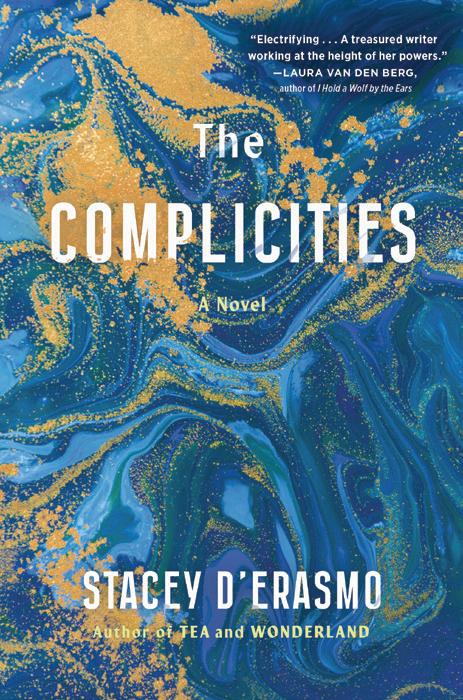 STACEY D’ERASMO (ALGONQUIN)
STACEY D’ERASMO (ALGONQUIN)
After her husband Alan’s vast web of financial fraud is exposed, Suzanne’s wealthy, privileged life is suddenly shattered. While he goes to prison, she files for divorce and attempts to create new beginnings and identity. Awardwinning author Stacey D’Erasmo tells a haunting and emotional story about a woman who is rebuilding her life in the aftermath of her ex’s wrongdoings, exploring who is responsible for damage when it is done – and who should pay.
Plant Magick: The Library of Esoterica
 JESSICA HUNDLEY (TASCHEN)
JESSICA HUNDLEY (TASCHEN)
From wedding-aisle rose petals and wreaths of lilies on an open grave to Valentine’s bouquets on a lover’s doorstep, cycles of joyful celebration and deep grieving are marked symbolically with herbs, flowers or branches of a tree. The fourth volume of this much-loved series chronicles a visual journey of the beautiful relationship between plants and people, and how they have become our method of signifying catharsis in difficult times, across global cultures and throughout history.
9
Five apps for… Slowing down
In an age of instant everything, it can be hard to lessen the pace. These apps will help your mind wander from worrying thoughts, escaping the everyday even for just a short while

10
IMAGE: UNSPLASH/BROOKE CAGLE
COLORFY
Colouring has the ability to take us outside of ourselves, giving our busy brains a chance to switch off and refocus on only the task itself. Colorfy is your digital answer to an adult colouring book, with heaps of images and mandalas at your fingertips, plus the option to upload your own sketches to colour in too. All you need to concentrate on is keeping inside of the lines. Free trial for seven days, then £9.49 per week
ANTISTRESS
If you’ve ever been a fan of bubble-wrap popping, this app is a fantastic way to keep fidgety minds calm with a plethora of mindless activities to turn to when you need some time out. There’s fidget spinners, soap carving, pen clicking and, of course, bubble wrap to pop by the sheet load (without the mess of real life). A great tool to take your mind off anxious moments.
Free
BREATHWRK
Breathing better can help us feel healthier, calmer and more energised. This app, as its vowelskipping name suggests, is your personalised breathing toolkit. Packed with a library of exercises – from overcoming a midday slump to relaxing your body before bedtime – it offers classes that range from just 60 seconds to 15 minutes. breathwrk.com
Free package of selected classes, or $7.99 per month/$38.99 per year
5 4 2 1 3
OTTER
While many of us are aware of the benefits of journalling, some people may find it hard to express themselves on paper. This is where this voicetranscription app can help. It’s perfect for those who want to talk out ideas that might prove tricky to articulate in writing. There’s a built-in microphone that perfectly captures voice notes, helping to clarify racing thoughts and feelings wherever you are. otter.ai
Free for basic package
TEN PERCENT HAPPIER
We can’t always fix everything at once, but we can work on improving 10 per cent at a time. The idea for this app came from a former ABC news anchor who had an on-air panic attack and then found solace in simple meditation. There’s a big selection of straightforward video and meditation combinations, ideal for anyone who doesn’t want anything overly spiritual. tenpercent.com
Free trial for seven days, then £87.99 per year
11
Leaning into uncertainty
In uncertain times, we need to be a vessel strong enough to hold that uncertainty, for this is where we grow, says Metanoia
While walking with my friend and my dog in Yas Island recently, I chanced upon a billboard. As with everything in the Middle East, it was extravagant. But this one in particular awakened something in me. It was promoting The Lion King, calling it an ‘unparalleled theatre experience’. The Lion King’s story has always been close to my heart. Apart from the fact that I am a passionate Leo, I admire the story’s message.
When Simba is trying to understand who he is, he sees his father in the clouds. Mufasa imparts the same advice that has been instilled in me ever since I watched the film as a child.
‘Look inside yourself. You are more than what you have become. You must take your place in the circle of life. Remember who you are.’
We all love to choose certainty – the comfort zone. Many people would rather stay in unhealthy situations instead of finding the courage to overcome uncertainty. Why do we need certainty so much? Have we become too used to it? Of course, craving certainty or stability is not always a bad thing.
Seeking stability to fulfil our personal or professional commitments is natural. It helps to maintain relationships. But we also need variety and change.
Our unconscious hidden fears drive most of our conscious decisions and actions. Sometimes, we are motivated by fear rather than hope. By design, society embeds fear in us. We are unconsciously invested in it and allow it to take over. Think about the stories that inspire you most. Think about the people you know who have done incredible things in their lives. Almost always, in a moment (or in
many moments) of uncertainty, a person’s story is transformed into one of astonishing courage and inspiration.
I attended a seminar by Tony Robbins in 2018 in which he talked about certainty and uncertainty as part of the six basic human needs. It was a new perspective; I learned the fine line between the role of uncertainty and a strong desire for certainty.
The inner conflict between the forces of fear and hope has grounded me several times in my professional and personal journey. Interestingly, whenever I make a decision driven by hope, I feel more contentment and joy regardless of the outcomes. I learned to see chaos and uncertainty as spaces of growth.
I was raised in a stable and organised environment. Set schedules, routines, seasonal vacation plans and to-do lists were part of the early years of my life. I grew up on the same street, in the same house, went to the same city school and tasted the kind of safety and security that all children should have.
Whenever I challenged that pattern, I found the real manifestation of learning. The ‘stretch zone’ –one of Ryan & Markova’s three zones concerning the learning process – taught me to test the power of uncertainty by asking myself one big question – ‘what is the next best thing I can do to move forward?’ It’s all about trusting my learned skills. I found the way to miraculous healing through the power of choice.
In every chaotic situation, I remind myself that fear is no longer my keeper. Welcoming the power of ambiguity in our lives permits us to replace fear with courage, and be a warrior. I remember who I am daily.
12
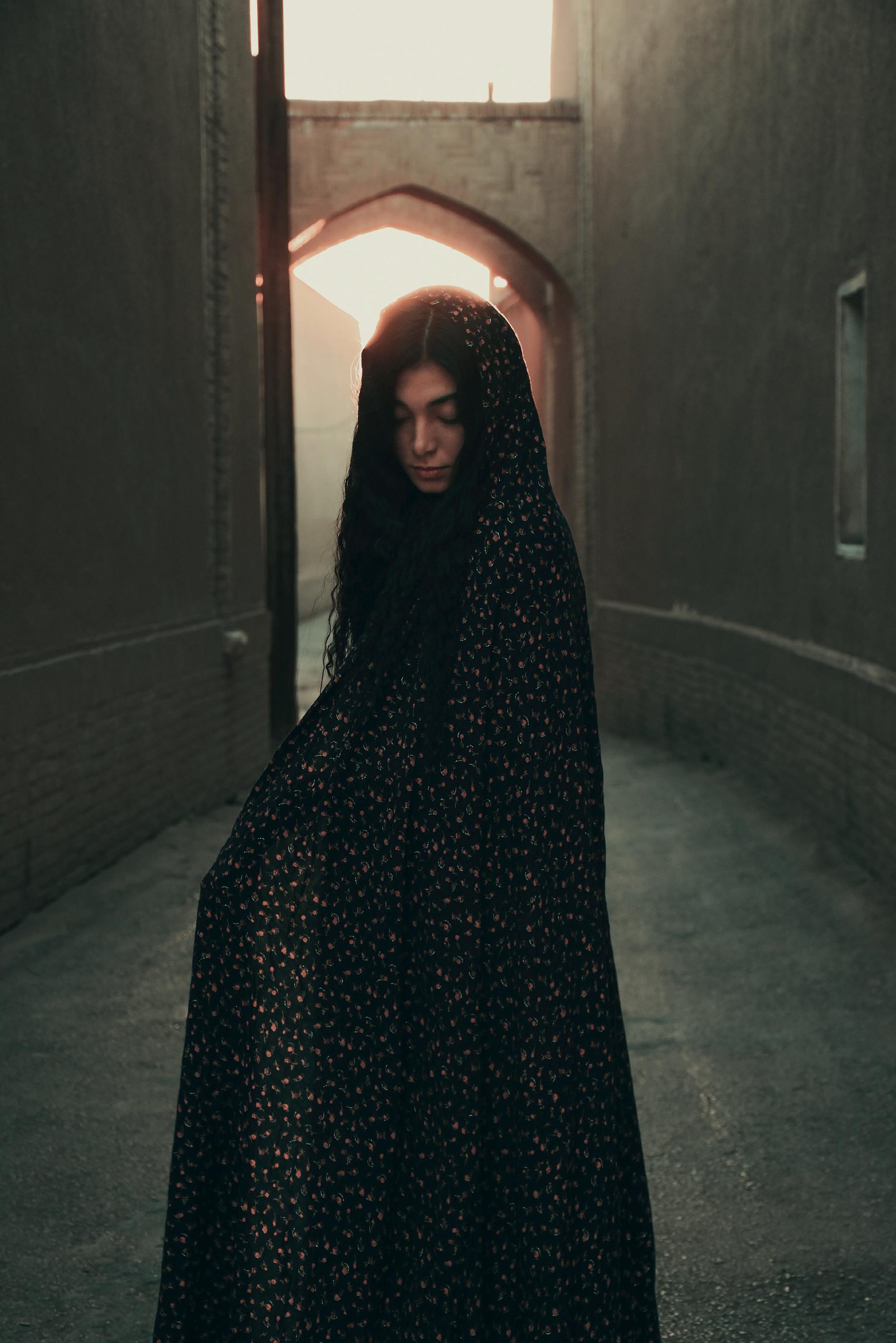
13
Whenever I make a decision driven by hope, I feel more contentment and joy regardless of the outcome
IMAGE: UNSPLASH/MOHAMAD JAVAD BARAKOUHI
Marty Rubin

‘Be there when the dawn breaks, when the first waves come in. Be there.’
IMAGE: PEXELS

 IMAGE: UNSPLASH/TYLER NIX
IMAGE: UNSPLASH/TYLER NIX
THE ART OF WINTERING
Winter is a time for surrender and soulfulness. In the sanctuary of the dark and the quiet, as winter holds space for us to slow down, we can feel ourselves more rooted to the earth and more connected with the eternal cycle of growth, death and rebirth, says Emma Johnson
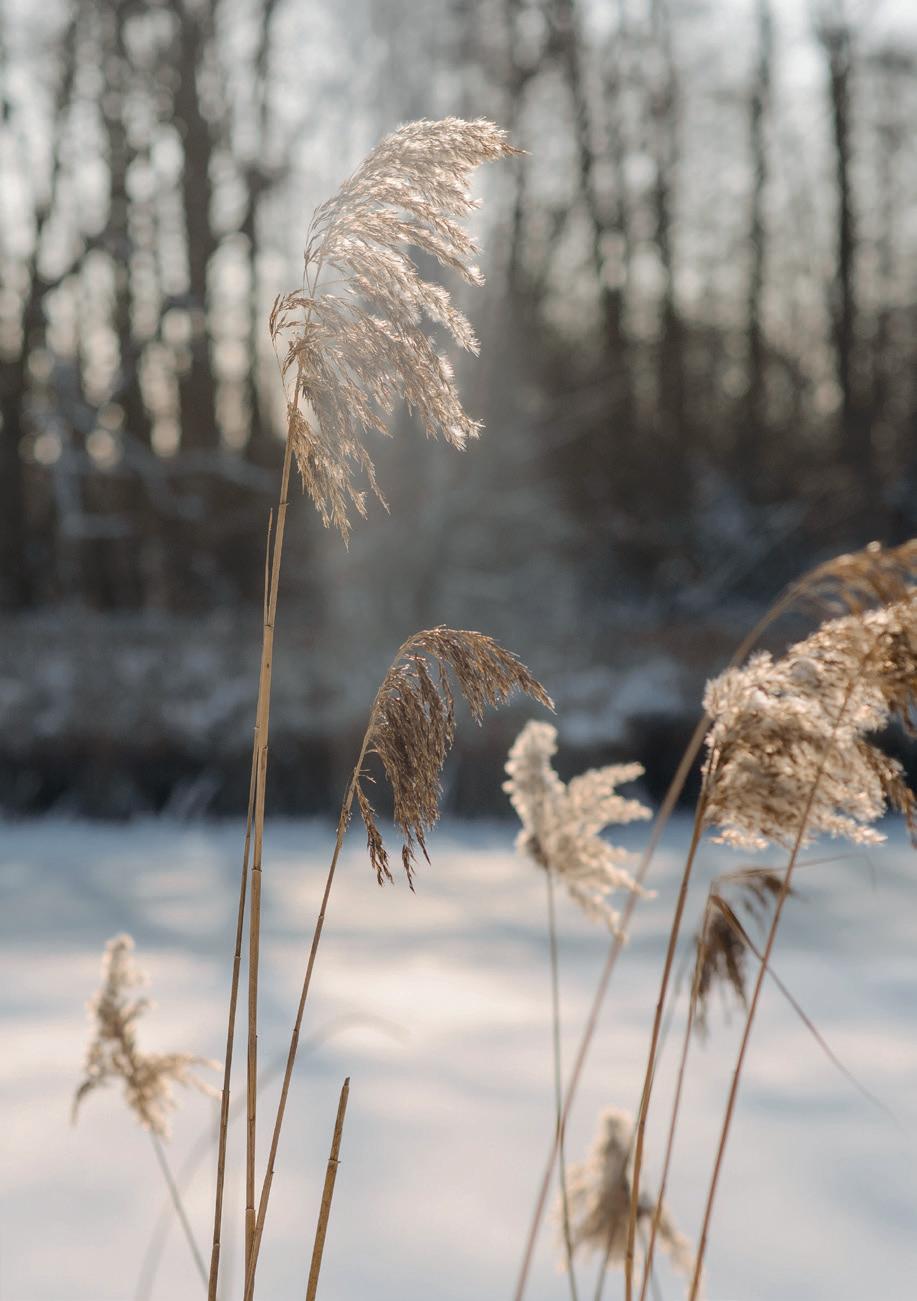
'
Darkness descends, the world outside is quiet, winds blow, snow falls, the trees are sleeping, surrendering themselves to the season, their sap turned downwards into the earth, shoring up their strength until spring. Gratefully, they have shed the weight of their leaves, their branches free from distractions, a welcome rest in the bitter snap of winter, safe in the knowledge that under the earth, all around them, the work of life is being done.
‘Although it appears that the natural world is dormant beneath our feet… miracles are unfolding,’ says Isla Macleod in her book Rituals for Life. ‘Within the seeds, there is a stirring, an emergence of life that takes place within the dark, when unseen creative forces are at play. From the fertile nothingness, the first sparks of life emerge.’
We associate winter with death, but really it is a time of deep connection to what it means to be alive. As we witness nature giving in with grace and softness to the bite of winter, our own need to surrender to this slow season is reflected back at us. If we can be present to the inevitability of death and loss that we see in nature, we can begin to understand the way that these cycles show up in our own life.
‘Plants and animals don’t fight the winter; they don’t pretend it’s not happening and attempt to carry on living the same lives that they lived in the summer,’ explains Katherine May in her book Wintering: The Power of Rest and Retreat in Difficult Times. ‘They prepare. They adapt. They perform extraordinary acts of metamorphosis to get them through. Winter is a time of withdrawing from the world, maximising scant resources… vanishing from sight; but that’s where the transformation occurs. Winter
is not the death of the life cycle, but its crucible.’
Winter literally holds space for us to witness the beauty of the cycle of life and to understand that it is a biological imperative to experience this yearly winter in our minds, bodies and souls. In our relentlessly busy world, we try to avoid winter. We shy away from it, fearful of how it leaves us barren and bare. And yet, nature not only sends winter but, by the very nature of winter, also sends the space around it for us to retreat and heal. ‘An occasional sharp wintering would do us good,’ writes May. ‘We must learn to invite the winter in. We may never choose to winter, but we can choose how.’
For humans, winter is a time to slow down and prepare, to shed what we don’t need and to rest. If we take our cues from what’s happening outside, we can reflect that on the inside. Acknowledge the darkness by resisting artificial light when you can, use candlelight and firelight to illuminate cosy spaces, allow yourself time to notice the growing darkness as the sun sets. Consider this a time of retreat, get the thicker, cosier blankets out of the cupboards, put together a reading list of books that will nurture you this season and reduce your screen time by reading in bed in the evenings. The energy required to do things in the dark takes more from you, so, quite simply, do less. Set stronger boundaries for social engagements or commitments than you normally would. If it helps, you can even set a limit of things to attend to each week, and focus on those events during the day. Acknowledge the things that drain you and the things that fill up your tank and consciously ensure the balance is tipped the right way.
‘I recognised winter. I saw it coming… I greeted it »
18
SEASONAL LIVING
‘ We must learn to invite the winter in. We may never choose to winter but we can choose how'

19 PREVIOUS PAGE IMAGES: UNSPLASH/LIAM
PEXELS/PAVEL DANILYUK. IMAGE:
SIMPSON,
PEXELS/EKATERINA BOLOVTSOVA

and let it in,’ writes May. ‘When I started feeling the drag of winter, I began to treat myself like a favoured child: with kindness and love. I assumed my needs were reasonable and that my feelings were signals of something important. I kept myself well fed and made sure I was getting enough sleep. I took myself for walks in the fresh air and spent time doing things that soothed me.’
Regulate your nervous system by using your hands to create things – it’s no coincidence that we find ourselves knitting and crocheting in winter. Not only do we need cosy jumpers and thick blankets, but repetitive crafts such as these can also calm a fractured nervous system and allow you to tune in to your inner world more easily. ‘As you make, you are connecting with the winter energies of transformation, creating and re-forming something,’ says Macleod.
The benefits of things like this also allow you to bathe in the beauty of silence, something we as humans often shy away from because, in that simpler space, our thoughts and desire are almost too loud. But, if we can attune ourselves to listening in the quietness, there is so much we can learn.
Norwegian explorer Erling Kagge spent 50 days walking solo through Antarctica after he disabled his radio and threw away the batteries in a quest to quieten the constant noise. He knows a thing or two about what truth we can find in the quietness. In his beautiful book Silence: In the Age of Noise, he says that silence is both a gift and a joy, and offers a true chance for deeper self-awareness.
‘Silence can be a friend. A comfort and a source of deeper riches… Shutting out the world is not about turning your back on your surroundings, but rather the opposite: it is seeing the world a bit more clearly, staying a course and trying to love your life.’
In this time of discovery and dreaming, journalling (try our guided January journalling series), meditation and even shamanic soul journeys (read more about that in this
issue) can help to connect you with what you want from your life and what things in your life need to be transformed. As nature shifts into a slower gear, welcome the time to be spent in solitude and soulful discovery.
From a lunar perceptive, this is also a vital time to connect to what moves your soul. The new moon in Capricorn occurs between the end of December and mid-January and is fused with an energetic shift that pulls us towards setting our goals and leaning into our heart’s desire. ‘Nature, with her perfect timing, gives us this grounded, earthy new moon... It acts like a fertile soil in which to plant the seeds and set out intentions for the year ahead,’ says Kirsty Gallagher in her book Lunar Living. ‘Pay attention to what you’re being pulled towards and what stirs your soul, as this will help create the theme of the year for you.’
Winter really is such a deep and potent time. Even the weather conspires to remind us to rest, stop and surrender. ‘I love the inconvenience [of snow],’ writes May. ‘The irresistible disruption to mundane life, forcing you to stop for a while and step outside your normal habits. Heading out in a snowstorm to catch the flakes on my gloves, I love the feeling of it fresh underfoot. I am rarely childlike and playful except in snow. It swings me into reverse gear.’
We need to learn to say yes to the winter, to be held in its dark, quiet grip, to curl up and turn away from the cold, to be warm, soft and slow, to dream, discover and connect with ourselves. ‘Welcome to the opportunity to meet yourself in your fullness, bare like the trees, with nowhere to hide,’ says Macleod. ‘Opening your ears to listen to the silence and surrendering to the fertile darkness will ensure you emerge in spring renewed and inspired ready for rebirth.’
If we go into winter with the intention of sinking into all it has to offer and all it asks of us, we will be better able to learn and gather all we need to from it.
21
SEASONAL LIVING
IMAGE: PEXELS
We need to learn to be held in the dark, quiet grip of winter... to be warm, soft and slow, to dream, discover and connect with ourselves

Don’t walk in front
 Albert Camus
Albert Camus
‘
of me… I may not follow, Don’t walk behind me… I may not lead, Walk beside me… just be my friend. ’
IMAGE: UNSPLASH/AARON HUBER
FINDING INNER SAFETY
Even with all the headspace in the world, if we don’t feel safe, we don’t feel truly held. Dr Nerina Ramlakhan , author and sleep expert, explains that we need to look inside ourselves for reassurance and comfort
To understand our need for safety, we first need to understand how our nervous system works to protect us. Our hunter-gatherer caveman physiology is designed along the premise of SAFE or UNSAFE. The autonomic nervous system, the part of the nervous system that regulates vital body processes such as respiration, heart rate, blood pressure, digestion and sexual arousal, is divided into two main branches.
One branch, the Sympathetic Nervous System (SNS), is the so-called fight/flight/freeze part of the nervous system. It enables us to fight threat and to survive. The other branch is the Parasympathetic Nervous System (PNS). This is the ‘rest and digest’ part of the nervous system, responsible for sleep and rest, sexual function, immunity and digestion. When we are thriving, feeling safe and sleeping well, we are operating predominantly from the PNS.
Years ago, I noticed a quickening in the pace of life, driven by the arrival of technology – email, the World Wide Web, mobile phones. In his book Faster, James Gleick described it as the ‘acceleration of just about everything’. At the time, I was working in a health screening laboratory and measuring the health of corporate employees, so I felt as if I was witnessing first-hand the impact of this quickening on our human physiology. I
noticed that people were having to speed up to keep pace with the external demands, changing their ways of living and working in order to try to do so. The result has been people living in the wrong part of the nervous system – the survival system.
Feeling safe lies at the heart of all of this. When we feel safe, we react differently to the world, we make different choices, we breathe differently. When we’re not feeling safe, the world and life feels hostile. As Deb Dana, a leading trauma therapist, says, ‘With our first breath, we embark on a lifelong quest to feel safe in our bodies, in our environments and in our relationship with others.’ Feeling safe has been a deeply personal mission for me, too. Years ago, I struggled with my own mental-health issues and insomnia. My own healing journey lies at the heart of my work. My mission is to help as many people as possible to return to their natural state of balance and energy.
So began my obsession with writing a book about feeling safe.
However, two decades ago, the world wasn’t ready to talk about feeling safe. Maybe I wasn’t ready to write this book myself as I was on my own healing journey – my own kintsugi journey of reclaiming and healing those broken parts of myself. But then the pandemic hit and suddenly everyone knew what ‘feeling unsafe’ meant. Suddenly, »
24
When we feel safe, we react differently to the world, we make different choices, we breathe differently

SELF IMAGE: UNSPLASH/TYLER NIX

26
We can all feel joy, happiness, peace and contentment, if we are prepared to embark on this courageous journey
IMAGE: UNSPLASH/ELI DEFARIA
‘inner safety’ was on the agenda and it was time for me to write my book. In Finding Inner Safety, I describe four different levels of feeling safe because I realised that you can feel safe in some areas but not in others. After all, human beings are complex and multidimensional. You might want to consider these four levels of inner safety and how they apply to you.
PHYSICALLY
Here, we feel safe in our environment, our space and homes. We have food and water. Our families are warm and protected. This is the base of the pyramid of Maslow’s Hierarchy of Needs. We also feel safe in the container of our bodies. We can withstand and endure, and we feel resourceful.
EMOTIONALLY
When we feel safe emotionally, we are open to warm and loving relationships. We are able to recover and bounce back from the tough stuff of life. We might even find humour in these tough situations. But, when we feel emotionally unsafe, we shut down. We don’t trust others. We avoid relationships, looking for reasons to leave. We hold everything in, grinding our teeth at night because it is not safe to speak.
MENTALLY
When we feel safe mentally, we feel focused and purposeful. We are assertive and know when to say ‘yes’ and ‘no’ and are able to hold strong boundaries in how we use our time and mental resources. We are able to express our energy creatively and innovatively. Feeling unsafe mentally shows up as imposter syndrome and extreme perfectionism, the latter driven by the ‘mad monkey’ in our brain that says we can’t stop. We are ruled by must do’s, should do’s, have to do’s… but nothing feels good enough.
SPIRITUALLY
This is the ultimate safety level. Here, we trust the process of life, even when things are going wrong. We have faith that we will be OK. We can rise above the messiness of our situation and see the learning – the perfection in the imperfection.
WHAT DOES INNER SAFETY MEAN TO YOU AND HOW CAN YOU FIND IT?
Firstly, we must turn inwards. We have become so used to looking outside of ourselves for safety. We rely on social media and the news to tell us how to feel and what to believe. We’ve forgotten how to be with ourselves, how to listen to that inner voice of guidance and support. We can take simple steps to reclaim this guidance. Here is a simple technique that can help you to do this.
First thing in the morning, when you become aware that you are awake, don’t open your eyes, don’t reach for your phone. Place one hand over your heart and one on your belly and notice your breathing. Follow three breath cycles IN and OUT. Simply notice. Notice how your breathing feels. Notice your thoughts, their quality and their speed. Are they kind or punishing? Soothing or threatening?
As you lie there noticing and listening, bring to mind a thought of something or someone you are grateful for in your life. It could be something so small that you had forgotten, but bring it to mind now. And then drop it into your heart. Breathe into your heart feelings of gratitude for this person or event. Be with the feelings for a few more breaths and allow yourself to soften with each breath.
Then go out into your day from this place of softness. Make choices from this place. Maybe you will decide to eat a nourishing breakfast to steady your nervous system, balance out your blood-sugar levels. Maybe you will avoid that cup of coffee knowing that your nervous system is already nervous.
This simple but profound morning practice can make a big difference. It resets the nervous system, bringing us back into SAFETY. It may feel like a tiny step but, done every morning, it will start to make a difference. It’s better still if you can find moments during the day to stop just for a few minutes and repeat this practice. Do it as you drop off to sleep, especially if your mind is wired from your day.
There are many other resources available to us that enable us to go back and heal those broken parts of ourselves that are perfectly imperfect and, at the same time, beautiful. They are windows and doorways to joy, happiness, peace and contentment. We can all feel these things if we are prepared to embark on this courageous journey. I offer you a roadmap for doing this in Finding Inner Safety
This is the kintsugi of finding inner safety.
Dr Nerina Ramlakhan is a sleep and energy expert who has been helping people to sleep, recover from burnout and manage stress for over 25 years. She is the author of Finding Inner Safety: The Key to Healing, Thriving and Overcoming Burnout (Capstone, 2022), Tired But Wired (Souvenir Press, 2010), Fast Asleep, Wide Awake (Harper Thorsons, 2016) and The Little Book of Sleep: The Art of Natural Sleep (Gaia, 2018)

27
SELF


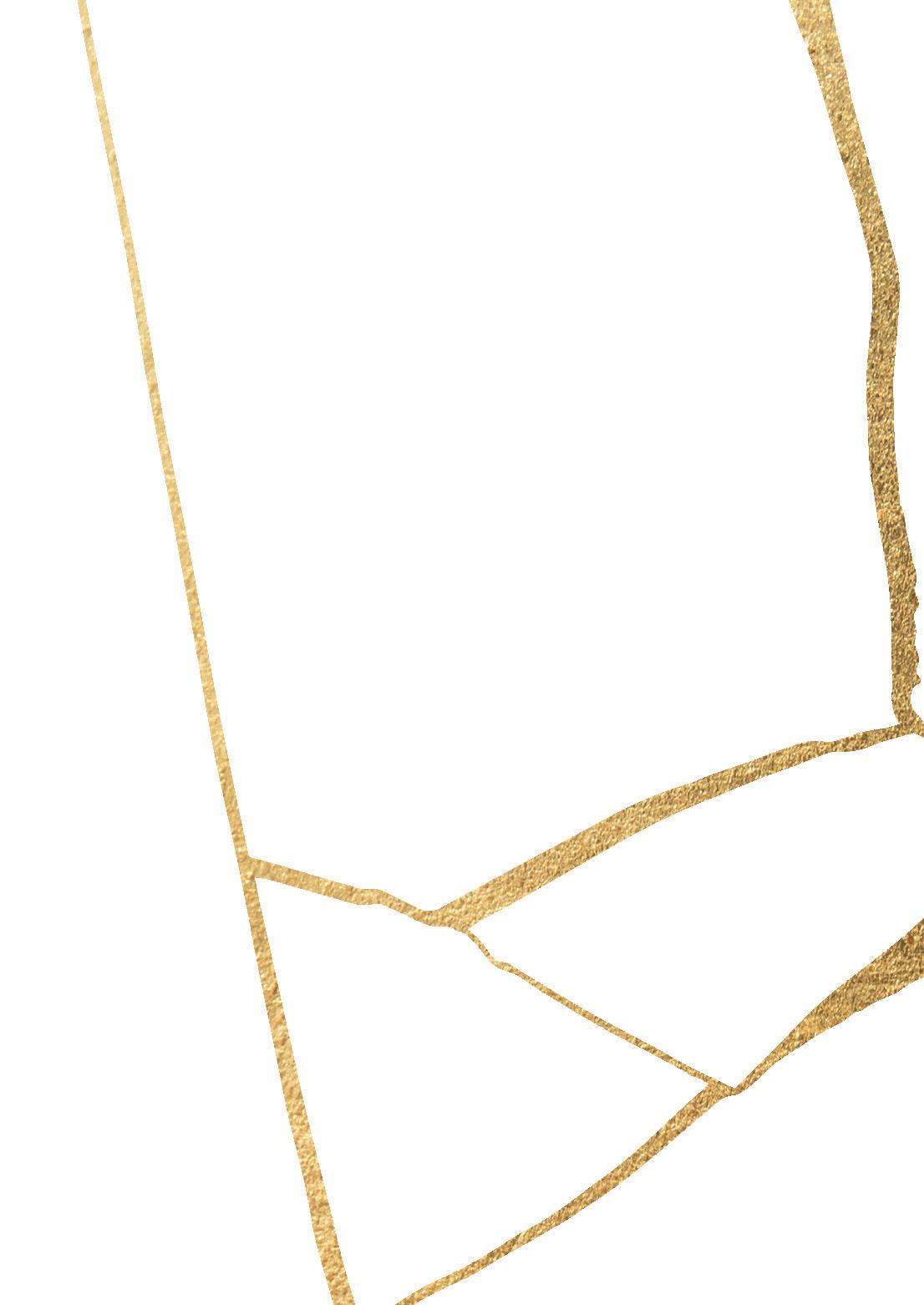
The UNBROKEN BOWL
Now, more than ever, the concept of holding space is vital. We all need an environment where we can feel held, and seen, in the fullness of our experience without judgement or shame. Anne Yazar considers what holding space looks like in everyday life
When Heather Plett’s mother was dying, her family were supported by Ann, a palliative-care nurse whose role it was to look after the patient, but also to guide the family through their mother’s last days. Plett’s experience of the grace, compassion and support that Ann provided was life-changing.
‘Ann gave us an incredible gift in those final days. Though it was an excruciating week, we knew that we were being held by someone who was only a phone call away,’ explained Plett in an article from 2015 that has since gone viral. ‘She was facilitator, coach and guide. By offering gentle, nonjudgemental support and guidance, she helped us
walk one of the most difficult journeys of our lives.’
The success of that article – in which Plett went on to demonstrate Ann’s simple presence and ability to know what kind of support to offer, as well as sharing the seven tenets of space holding – eventually lead to her seminal book The Art of Holding Space: A Practice of Love, Liberation and Leadership
Between anecdotes from her own life, Plett raises the idea that space holding is something we can do simply for ourselves, but also for our families, our children, our peers, our employees, our friends and our communities. Crucially, she explains that where it differs from all other ways of talking or sharing is that it is an entirely judgement-free space, where »

30

SPACE-HOLDING
pain, rage, confusion and crisis are welcomed and heard, without being ‘fixed’.
‘When we hold space for other people, we open our hearts, offer unconditional support and let go of judgement and control.’
All too often, when someone is in pain, we jump in to rescue them, to suggest ways they could solve their problem or mend their broken heart. But, in so doing, we deny people the very human experiences of loss, grief and sadness. Sometimes, we have to be broken in order to rebuild ourselves. Sometimes, we need the space to work through what we need in our own time, without the
expectations, approval or influence of others.
‘This is the "problem" with dealing with someone who is actually a good listener,’ says novelist Sarah Dessen. ‘They don’t jump in on your sentences, saving you from actually finishing them, or talk over you, allowing what you do manage to get out to be lost or altered in transit. Instead, they wait, so you have to keep going.’
What happens when we keep going, as Dessen says, is that we begin to make sense of the messy pieces of our own lives and start being truly honest with ourselves. And it is in that place where growth, healing and change truly happens.
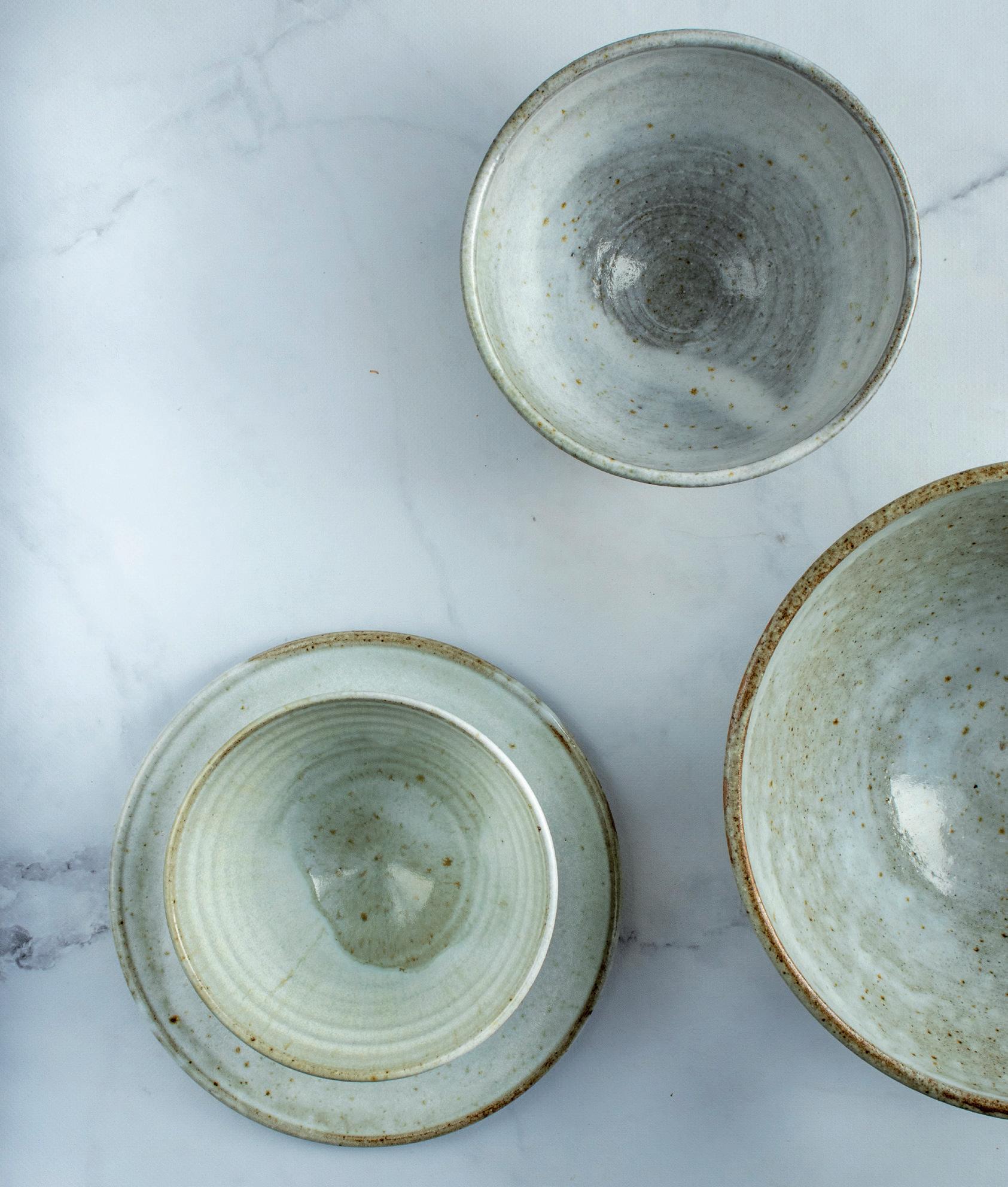
32
DUPONT. PREVIOUS PAGE: UNSPLASH/TOM CREW
IMAGE:UNSPLASH/FRÉDÉRIC
When we hold space for other people, we open our hearts, offer unconditional support and let go of judgement and control
In her book, Plett, a mother of three uses the analogy of a bowl holding Lego pieces together to explain her concept of space holding. ‘You know what happens when someone deconstructs a Lego structure, and the bricks are not contained. There is Lego everywhere. Sure to cause pain for the unsuspecting, barefooted person making their way to the bathroom in the middle of the night. The bowl that holds the Lego does not change the process or the shape of the destruction, nor does it direct the creation of what’s to come. It simply contains, offering safety, boundaries and support, so that nobody is inadvertently wounded in the process. It also ensures all the pieces remain available for rebuilding.’
It’s such a simple idea, but a profoundly powerful one. Space holding is about the almost invisible work of containing all the pieces of ourselves, without changing the story of the way they fell apart, or how they will be shaped in the future, but keeping them safe while they are sorted through and rebuilt.
What we offer isn’t things such as advice, tips, guidance or our own experiences. In fact, in many respects what we offer when we hold space is the absence of those things we all normally find in a conversation.
In a held space, there is no judgement, no interruptions, no problem solving, no opinions and no attempts to try to impact the outcome of someone else’s struggle. We don’t offer counterarguments and we don’t even offer reassurances or compliments when someone berates themselves or shares their fears. We are a container for all that they feel and need to articulate and share, keeping the rim of that bowl watertight so their feelings are safe and supported.
or to try to influence someone or to compare their story to our own. We listen to witness, to hear and to acknowledge.
As Brené Brown, an expert in the areas of shame and vulnerability, reminds us: ‘If we can share our story with someone who responds with empathy and understanding, shame can’t survive.’ In a held space, even if we do not understand, we listen with compassion. A held space is one that welcomes depth and complexity, a place where the scary, harder, uglier things from life are welcomed. In a held space, people need to know that the container has capacity for all their story, no matter how complex or difficult.
As space holders, our job is to hold the rim of that bowl taut and immovable as grief, pain or transformation flows. This is what safe spaces are.
‘Help them feel safe enough to fail,’ writes Plett. ‘When we, as space holders, withhold judgement and shame, we offer [people] the opportunity to reach inside themselves to find the courage to take risks and the resilience to keep going even when they fail. When we let them know that failure is simply a part of the journey and not the end of the world, they’ll spend less time beating themselves up for it and more time learning from their mistakes.’
‘We need to stop measuring ourselves against other people’s goals, and blindly following the status quo’
And, in turn, we recognise that people often want to resolve something in a way that might feel alien to us, but that we are all different, and we let go of our need to control an outcome so that it sits with our own value system or cultural norms, and simply welcome someone else’s journey to resolution or discovery. When we refrain from offering advice, we allow people to go inwards and begin to trust their own instincts again, to listen to their own intuitive wisdom.
As the person holding space, in many ways we become the empty vessel for the experiences of others, welcoming silence and space without any need to fill it ourselves. We have to ensure that we are emptied out before we hold space, and that, when we are listening, it is with curiosity and a deep desire to hear what is being said and what is not being said – the truth behind the words. It is in these moments that people feel truly seen and heard.
‘Most people do not listen with the intent to understand; they listen with the intent to reply,’ said author and educator Stephen R Covey. One of the things that makes a held space unique is that it has no place for ego. We don’t listen to help and advise
By holding space for others, we make it possible for them to sort through those scattered Lego pieces and build something beautiful that only they know how to create. We don’t build it for them, but we are there to witness their work and love them through it. And, by holding those pieces in a safe container, we ensure that they can take as long as they need to build this new life of authenticity and self-knowledge.
They know that they can return again and again to the safety of the container – if they need more pieces, if there is more sorting to be done. This is a space held for all that they have and are, and all that they can be.
SPACE-HOLDING

 Roy T. Bennett
Roy T. Bennett

IMAGE: UNSPLASH/BRIANA TOZOUR
‘Sometimes all a person wants is an empathetic ear; all he or she needs is to talk it out. Just offering a listening ear and an understanding heart for his or her suffering can be a big comfort.’
Ackno w l e dgement
In the pause, we gain great strength. The answers we seek – to being, doing, having more – lie within us. Give yourself the gift of time and space to acknowledge, says Laura Toop
is the m edicine
36

SELF
Sitting on the beach in May 2016, looking out at the endless Caribbean Sea skyline, the waves lapping onto the shore, the sun on my back, I realised this was the first time in months, probably years, I had taken a pause, to acknowledge where I was and how I felt.
The previous year, my husband had died – 11 months between diagnosis and death. My health had suffered and, ultimately, my career disappeared too. By any measure, it was a lot to contend with.
Many times, I asked myself: ‘How was I going to cope? What was I going to do?’

Yet, on that beach in Aruba, I noticed how grounded I felt, more connected with myself, calmer and more confident to take on the world I now faced.
I knew I did not want to return to the previous unhelpful coping strategies of the past. The
numbing, denying, avoiding, doing more – they never worked long term.
The medicine I needed for the long term was to acknowledge. It had been there all along, the helpful coping strategy I sought, if only I had taken the time to pause and look.
We tell ourselves there is no time to pause. I’m too busy, I’ll stop tomorrow, we say, but tomorrow never comes.
Propelled forward by the expectations, real and implied, of ourselves and others, we become caught up in being busy. We want to be there, not here.
The fear of rejection, criticism, or failure of not being, having or doing more, keeping us stuck in being busy. We want to fit in, to belong.
We disconnect from who we are and what matters most to us as the boundaries between what is ours and what is theirs are now obscured. We want to feel
38
connected, aligned with ourselves.
Operating in the eye of this busyness, it is impossible to notice fully what is going on and how the continued stress impacts both the mind and the body. Until it is too late, that is, and burnout or sickness strike. As it did for me.
Acknowledgement is the medicine.
In the pause, we gain great strength. The answers we seek – to being, doing, having more – lie within. Give yourself the gift of time and space to acknowledge.
Acknowledgement offers the opportunity to take notice and to connect with ourselves, who we are, what really matters to us and how we want to feel, without judgement or criticism or expectation of ourselves or from others.
Acknowledge the reality of what is. Work with your emotions. They are neither positive nor negative, simply signals telling us what we need, desire or want more of. With clarity comes greater connection and grounding with and for us. Giving you greater courage to move through the uncertainty of the world around us.
Acknowledge your own voice, what matters most to you. The strength of your relationships and the confidence to stand firm with your boundaries will grow.
Acknowledgement allows you to boost the powers of your parasympathetic nervous system, which is responsible for rest, digest, growth and repair. In short, those factors that pacify our ‘fight and flight’ instinct and improve our chances of avoiding burnout. Being intentional about holding space for ourselves is key in a busy world. However, with journalling, meditation and focusing on our breathing, there are other ways we can acknowledge with purpose.
Creative expression is a way to hold space. I know others who have found art and photography as a means of ‘holding space’ for their own thoughts. Personally, I found dance. I call it ‘self-expression without words’. In the end, ‘holding space’ is about being with what is, and it matters for us to have clarity, focus and grounding in the moment. It is about you finding your own perfect acknowledgment medicine.
Award-winning photographer Linda Robertson says ‘behind the lens is my perfect meditation’. In these moments ‘nothing else matters’. Acclaimed artist Tracey Emin recognises that ‘if I don’t make things, I become ill and depressed. Painting makes me feel like a better human being. It’s what I’m supposed to be doing.’
Although I don’t journal, I do use words as a means of expression. I prefer Post-it notes or artist sketchpads. They allow freedom of space and thus thought. There is no perfect place to start, no right or wrong words to choose – you simply start where you are, with the first thing that comes to mind.
We can still hold space with purpose by asking ourselves six key questions. I call them The Baseline Six.
l Where am I?
l How do I feel?
l What matters most, or how do I want to feel?
l What is in my control? Our creativity, perspectives, emotions, judgements, attitudes, decisions and desires.
l What might stop me?
l What support can I seek, from others or myself?
It is these six questions that allow me to meet with any situation, big or small, to build the bridge to a greater connection with myself and my position within the world.
We can tell ourselves there is no time to pause, we have things to do, but, in acknowledging, you have clarity of where you are and what you want to take focused, purposeful action – courageously, confidently and calmly – undeterred by the busy and uncertain world outside. Use The Baseline Six to find your own acknowledgement medicine before it becomes too late.
The choice I made – to purposely set aside time and space to acknowledge, to connect with myself, what mattered most to me and how I wanted to feel – has been both compass and anchor in the years since May 2016. It gave me the courage, the confidence, the calmness to weather whatever situation, big or small, came my way, free from burnout and sickness.
Acknowledgement was the medicine I sought. It was there all along, had I stopped long enough to notice it.
39 ALL IMAGES: UNSPLASH/ALLEF VINICIUS
SELF
Acknowledge your own voice, and what matters most to you
Natalie Goldberg



‘
Women need space and silence. We too quickly give away our energy.
There’s something about holding that richness. ’
IMAGE: UNSPLASH/JESSICA DELP




STRENGTH IN NUMBERS
When crisis happens, women gather, encircling those in need with comfort, support, love. Circles of women are powerful things, something our ancestors who used to gather in this way knew only too well. Perhaps it’s time we all started gathering again, says Lucy Jones

My mother recently had to go into hospital. She is single, and there is only my sister and me around who can support her. Or so I thought.
Since the first day she was admitted to hospital, women from all corners of her life have materialised in our lives with beautiful grace. My aunts have driven from all over England to be with her in hospital and to sit around my kitchen table and make plans, so that my sister and I are not alone. An ex-nurse friend of hers, who has recently had a hip replacement, has issued orders and translated doctor jargon from her own recuperation bed, while another friend has shared her diary with me so I can coordinate visiting times.
My friends have dropped off food, sent messages, brought me flowers and turned up with hugs. My sister-in-law, another ex-nurse, rings me every day on the way back from hospital to help me make sense of the latest test results. Other friends have invited my children over for play dates or have done the school run, while others have listened while I ranted, without once questioning my rage or sadness.
Together, this group of women has encircled my sister and me, wrapping their arms around us, holding us in the centre of this impossible time with instinctive compassion.

44
And there are stories like this throughout all women’s lives. When the husband of Sheryl Sandberg, formerly COO of Facebook, died suddenly, her group of six friends rallied round to be there for her. When, in the dark weeks after his funeral, she emailed them all to say ‘someone come’, they responded with total commitment. ‘They have jobs. One of them has five kids. They are busy. But I knew that they weren’t gonna fight over who wasn’t coming. They were gonna fight about who would. They’re always there,’ she told Desert Island Discs in 2017.
Cancer survivor and coach Christine Handy, who writes and speaks about the role of faith in her recovery, recalls how her friends supported her and gave her a reason to keep going during the painful months of chemotherapy. ‘One day, I came back from chemotherapy and my mother was on one side of me and my father was on the other side of me, carrying me into my house because I was so violently ill. And my father opened the front door, and inside, all over my house, were yellow sticky notes and on every sticky note was a scripture from the Bible,’ she told a podcast in 2021. ‘My friends had come over while I was at chemo and papered my house in scripture. Now I was looking at Bible verses instead of my pretty porcelain and my Prada bag. And it gave me hope.’
Women have always done this for each other. We rally. We come together when the worst happens. But, centuries ago, we didn’t do this only in a crisis – we gathered together all the time. We lived with our relatives – our aunts, our grandmothers, our cousins. We supported each other through marriage, babies, loss, illness. We gathered at kitchen tables, cooking stoves, fires, in wash houses and around cotton looms, sick beds and gravesides. We made things while we talked, we sorted out problems while we worked, we raised each other’s children, heard each other’s stories, healed each other’s aches and pains, and we knew that this village – this true village of women – was always there.
‘There is so much power in uniting. Especially when you unite women,’ says Handy. ‘When we stand with each other for months and months and seasons after seasons, then really we’re unstoppable.'
Recently, there has been a shift towards gathering women together in this way with more regularity, to try to reconnect with some of that ancient and instinctive wisdom that bound us all together.
Women’s circles aim to bring women together regularly in a safe, held space to emulate those times when we felt part of a village, encircled by our community of women. While there would have traditionally been a central fire around which women gathered, now they meet around candles or lanterns, with nature altars reflecting the seasons, as well as crystals, talismans and healing stones. Many circles now even meet online, a virtual and literal web of support fanning out across the globe. Space is left for the sharing of stories and there is time for reflection, meditation, rituals and blessings.
At Sister Stories, founder Gemma Brady, who also offers women’s circle-leadership training, runs a circle journey over the course of six months. Her latest offering, called ‘Tender’, is a women’s circle designed to hold space for developing a deeper relationship to yourself and treating yourself with reverence and care. ‘Tender is medicine for the heart, a place where expansion meets deep holding,’ she says. ‘It is »
45 SISTERHOOD
IMAGES: PREVIOUS PAGE PEXELS/RFSTUDIO. UNSPLASH/VONECIA CARSWELL
'There is so much power in uniting. Especially when you unite women'
an access point to finding the tools to support you through the most challenging of times… To feeling the ways in which we can allow ourselves to be held by others if we open ourselves to it.’
The backbone of this programme, and all Brady’s work, is circle, which she describes as an intimate, guided space in which you can share and be held and which crucially brings women together with regularity so that they can come to rely on this time each week or fortnight.
For Nicola Wood, who runs Women Replanting and trained with Brady, a circle is a wonderful way for women to make gathering together a regular habit. ‘I believe that we all have within us the answers that we seek. Sometimes, it helps if we are welcomed into a space with an invitation to slow down, be held in community, given permission to unfurl, peel back the layers and masks we wear day to day and feel truly seen and listened to,’ says Wood.
Circles can take many forms, with lots of them focusing on a specific aspect of women’s lives. Across the world, many women have set up Red Tent circles, which take their inspiration from the red tents used in tribal society. Red tents were traditionally menstrual huts, a space for women to retire from all tasks for a few days each month.
‘A Red Tent is a red textile space where women gather to rest, renew and often share deep and powerful stories about their lives,’ explains Isadora Leidenfrost, whose documentary Things We Don’t Talk About: Women’s Stories from the Red Tent goes behind the scenes of this unique space.
‘The Red Tent movement is changing the way that women interact and support each other by providing a place that honours and celebrates women,’ says Leidenfrost. Some women create red fabric spaces specifically to honour their menstruation, and meet on a monthly basis, while others offer workshops, discussion or simple circle spaces.
In London, Anoushka Florence, who founded The Goddess Space, runs a Mama Village circle alongside Debbie Raynor, a trained holistic Waldorf practitioner, focusing specifically on the motherhood experience. ‘It’s a space created for conscious mamas seeking to find a tribe of like-spirited women,’ says Florence. ‘A space created for mamas to connect back to themselves, their babies, nature and each other.’ Florence describes the circle as a ‘journey’, asking that each woman commits to meeting weekly and starting to grow a supportive community of women on which they can all rely. ‘This is an ode to rebuilding the village… We will come together in circle where we can openly discuss the joys and challenges of raising a child in this modern world. Creating an open space to share our stories, a space to be heard, listened to and witnessed.’
Online, Katie Beete runs her Seven Mothers Circle, holding space for a group of seven women from across the UK and beyond, to specifically help them to connect with what they need and having those needs met. ‘Circle is a perfect space to go within and ask the questions we may have been avoiding asking and
46
Women’s circles do their most powerful work by bringing women together in a space that is held and safe from judgement
to seek the medicine we need,’ says Beete. ‘It is so important to understand as mothers and women what our needs are and where they are not being met.’
With a specific focus on grief, Nici Harrison has created a circle space that allows anyone grieving to connect with their grief, share their story and experience grief as part of a community. ‘Grief circles are ancient. For thousands of years, across different cultures and continents, people have been coming together in circle to share in life’s joy and pain,’ says Harrison. ‘Within a grief circle, you will be held and supported throughout. You can expect an exploration of grief tending, guided meditation, group sharing and soothing poetry or music to support us integrate our grief.’

Of course, women’s circles do their most powerful work simply by bringing women together in a space that is held and safe from judgement.
Women are welcomed to circle as their unapologetically authentic selves, supporting each other by sharing their stories and witnessing those of others, always being accepted for who they really are. ‘Going to circle is like coming up for air,’ says Charlotte Sarre from Spiral.In, who runs circles online and in London and also trained with Brady.
‘In a world where we are often expected to play a certain role, that of the mother, the colleague, the partner, the friend, I believe that having a space where we can be unapologetically ourselves is a necessity. I believe it’s one of the most important acts of self-care a woman can gift herself.’

47
IMAGE: UNSPLASH/SIERRA KODER
SISTERHOOD
 Jeanette LeBlanc
Jeanette LeBlanc

‘ Sometimes there is so much that needs to be said that we must get really quiet in the hopes that someone out there is listening hard enough to the silence to hear every last word. ’
IMAGE: UNSPLASH/MARIAH KRAFFT

RISING STRONG
If the planet – and humanity – has any chance of a positive future ahead, then it needs a generation of children who know themselves deeply, and who will live intentional, conscious lives.
Nicola Chantler interviews parenting expert Sarah Ockwell-Smith about holding space at home
Building deep and lasting connections with our children is our mission as parents. We strive to be pillars of support when they need advice, to comfort and reassure them during their big emotions and to ensure our unconditional love allows the difficult conversations to flow freely.
Yet, in our families’ increasingly demanding schedules, being there when they need us, in the way that they need us, can be tough. Children don’t often know how to articulate challenges or worries, so we have to be able to interpret those and be prepared to take the time to let their feelings emerge.

In today’s culture, our children are busy people. The school day, after-school activities, play dates, engagements, the pull of technology, coupled with our own working lives, can mean that time to ‘simply be’ together is in short supply. And, as our children continue to grow and gain more independence, we’re up against stiffer competition for downtime together.
‘In a utopian world, it would be good to have more support from other adults, friends, family members, etc, and have less work [and] more time with our children,’ says Sarah Ockwell-Smith, who has written many books about child-rearing and who specialises in the psychology of parenting. ‘But, in reality, our world has changed, families are fractured and we are all ridiculously busy. Acknowledging these obstacles and giving ourselves grace for working against them is important,’ she says.
The time crunch can mean that sometimes we fall into »
51
MOTHERHOOD
a parenting ‘trap’ of trying to encourage interaction with our children at the wrong times. Quizzing our children when they just walk in the door, asking convoluted questions when they’re tired or jumping to problem-solving might be well meaning, but often isn’t met with the desired response.
In fact, bombarding our children with questions before they've had time to wind down can often elicit the opposite reaction – shutting down an opportunity for mutual engagement. It might also lead to a grumpy or rude outburst from our child, as they grapple with not having had the space they need to relax.

Knowing when to make conversation with your child is key to getting them to open up. ‘As much as you’re dying to hear about their day, they just need to decompress and relax,’ writes Ockwell-Smith in How to Be a Calm Parent
‘Give them at least half an hour before asking… A lot of children are ravenous after a school day. Offering a snack as soon as you’re home usually makes for a much calmer, happier child. When they’ve had a little bit of space, ask if they would like to join you in a game, a cuddle, watch a TV show together or read a book.’
With the benefit of some R&R, we might find our children feel more inclined later on to open up to us about their day. Holding space for our children to talk about their emotions, at a time when they are capable of sharing with us, is crucial.
‘A connected child is a child who is much more likely to communicate with you and spontaneously tell you about their day,’ writes Ockwell-Smith, adding that certain tools can help pave the way to open channels of communication. ‘Books that talk about emotions and TV shows or movies which explore them’ can, she writes, be really helpful. ‘My favourite is Disney Pixar’s Inside Out (which centres around the differing emotions and voices in our mind).’
During the parenting journey, our relationship with our children naturally changes. As they evolve, so do we to meet their new demands, interests and dislikes. Throughout this, it’s our hope that they continue to confide in us with whatever arises in their lives, big or small.
Ockwell-Smith says that, while it may feel that we need to focus on them, it’s really the inner relationship we have with ourselves that makes the greatest ripples. ‘The most important thing we can do is to focus on our own feelings and life experiences and how we deal with them,’ she says. ‘If we want to embrace “emodiversity” in our homes and to raise children »
52
IMAGE: PEXELS/ANASTASIIA CHAIKOVSKA
MOTHERHOOD
Knowing when to make conversation with your child is key to getting them to open up


who feel free to talk to us – about their worries and problems as well as their happiness and hopes – we have to have a household where everybody feels safe to express themselves. That starts with us.’
Leaning in and being kind to our own inner child can be enlightening work, yet also challenging. However, when we consider how we were parented, whether we were able to express our own emotions, had loved ones to confide in – or had our feelings repressed – it can offer valuable insight into how we might be, knowingly or not, parenting our children.
It can also give us the opportunity to make the changes that we want for our own children. Through this active reflection, we might discover certain patterns that we wish to change in our own parenting.
‘Raising children who feel able to be open with us about their feelings is about who we are, how we handle our own feelings and our responses to our children,’ Ockwell-Smith explains. As parents, we need to model how we manage our feelings and how we talk about them – and even be gentle on ourselves when we see patterns repeating.
‘We all carry triggers related to our past,’ she adds. ‘These memories, triggers and emotions shape who we are and how we interact with our own children.’ Working on them can mean ‘we don’t launch in with admonishment or punishment’.
Loving our children with a fierce intensity can mean that, when we make mistakes or fall back into a noticeable pattern of our own childhood, we can feel that all-too-familiar parental ‘guilt’. Yet, rather than punishing ourselves for our misstep, realising the conditioning and triggers that we all carry is pivotal to bringing a greater sense of stability and connection in our relationships with our children.
Ockwell-Smith concludes that these moments of recognition help bring about positive change. ‘Too many parents blame themselves for not being calm enough, for snapping at their children after trying techniques to help,’ she says. ‘They feel a failure when they don’t work, but don’t realise quite how much conditioning they carry with them.’
She says that ‘realising that they all carry hurt and conditioning with them from their own childhoods and realising the impact this has upon our interactions with our children’ can offer opportunity to change.
Positive reflection and being kind to our own inner child can crucially help us as parents bring a greater sense of peace into our children’s childhoods.
TOOLS TO HELP HOLD SPACE FOR YOUR CHILD
How to Be a Calm Parent by Sarah
We Are Here Hear
Sells award-winning affirmation cards for children and families, including After School Conversation cards weareherehear.com/ affirmation-cards
Good Inside Heartfelt and inspiring parenting videos and classes from Dr Becky Kennedy, covering everything from tantrums and listening to neurodiversity teens to sleep challenges (goodinside.com/@drbeckyatgoodinside)
Sarah Ockwell-Smith is the author of How to Be a Calm Parent and The Gentle Parenting Book
Ockwell-Smith
MOTHERHOOD
ALL IMAGES: UNSPLASH/DOUGLAS LOPEZ
Leaning in and being kind to our own inner child can be enlightening work, yet also challenging
a person does not define
Wayne Dyer

‘Judging
who they are. It defines who you are.’
IMAGE: UNSPLASH/SIXTEEN MILES OUT


Into the Light
“Shamanism is not an accumulation of knowledge – it is an innate wisdom that we all have.” Luciana Bellini meets Jo Bowlby , shaman to the stars, to learn about this ancient spiritual practice and discover how harnessing its simple rituals might just be the answer to living a happier, more harmonious life

e all work with energy, we all read energy – it’s just that most of us don’t realise it,' Jo Bowlby tells me. We are chatting over FaceTime on a darkening Thursday afternoon, and the shaman and spiritual coach is explaining to me that yes, she can carry out her energy healing sessions over the phone and yes, they work just as well as in person. ‘Energy is non-local,’ she explains. ‘You’ve had phone calls with people where it’s been lovely and you’ve come away buzzing, and then there have been terrible phone calls. The phone call has changed your energy – it’s not the phone. And that’s what I do.’
Berkshire-born Bowlby may not look like the picture of a shaman you have in your head, dressed in flowing robes and elaborate headgear – instead, she is the 21st-century embodiment of a spiritual guru, and when she calls me from her home overlooking Battersea Park in London, she is warm, inviting and engaging, without a hint of the overtly woo-woo. For Bowlby, there was no specific moment where she was called to shamanism – she worked first as an estate agent and later in publishing - but she always had an ‘innate curiosity of life’ and wanted to make sense of
why ‘I found certain traditions harder to work with.’ She was in her early thirties when she went to a talk by the Cuban psychologist and medical anthropologist Alberto Villoldo, who has spent years working with the medicine men of the Amazon. As she delved into his teachings, she found it was ‘like jigsaw pieces falling into place’.
Since then, she has spent the last twenty years perfecting her craft, first by studying at the Four Winds Society, where she specialised in the traditional teachings and energy work used by Native American and South American shamans, before continuing her training in Peru with the Q’ero elders in the Andes. Today she is one of the most sought-after modern shamans, who works with an international client base that includes celebrities and top CEOs. Last year she released her first book, A Book for Life: 10 Steps to Spiritual Wisdom, a Clear Mind and Lasting Happiness, which gathers together everything she has learnt and distils her teachings into handy tips and tools designed to help you build up your resilience and find balance.
Shamanism may be one of the oldest spiritual practices, but over recent years »

WELLBEING
PEXELS/ELIZAVETA DUSHECHKINA
W ‘
IMAGE:


it has experienced a major resurgence. Americans alone spent more than £1.7 billion on ‘mystical services’ in 2018, and in a postpandemic world, where so many of us feel isolated and disconnected from the world and those around us, we have never been hungrier for spiritual fulfilment, something Bowlby can attest to. ‘The reason I see as many clients as I do is because we live in a very literal world,’ she says. ‘We have been taught to use our analytical brain for everything. And that can be fantastic when you want to do a mathematical equation, but not so good when you’re trying to understand why you feel empty inside.’


So, what exactly is shamanism? Bowlby describes it as an ‘ancient spiritual practice’, in the same realm as Zen and Buddhism, only less cerebral. ‘Shamanism is visceral,’ says Bowlby. ‘It uses nature and the world around us to explain the world within. You have to remember that way back when, if a shaman was trying to help their community, many of them wouldn’t have been literate, so they used what was to hand to explain things. Even a five-yearold knows what I mean if you say, ‘close your eyes and imagine you’re flying like an eagle’, or ‘put four paws on the ground like a jaguar.’ So, shamanism is just a way of explaining how the mind is.' Bowlby insists she is not teaching her clients anything new – instead, she’s helping them access something within themselves, most likely deeply buried and long forgotten. ‘It’s not an accumulation of knowledge – it’s an innate wisdom. That’s what spirituality is, that’s what shamanism is – it’s remembering that wisdom we all have.’

As for why it’s having a moment now, Bowlby believes that’s all down to how removed we have become from the natural world, and the
negative impact that is having on our mental and physical health. ‘We’re in a world that’s trying to find its bearings,’ she says. Many of the shamanic exercises ask us to find ways to connect with nature, as a way of helping us ‘break through the hold of the intellect, so we can get to a place beyond words’. To do that, Bowlby suggests a few simple rituals, such as walking barefoot in the grass or feeling the bark of a tree. ‘At this time of year, I also love creating little fire ceremonies,' she says. 'A fire ceremony can be a great big bonfire outside, or it could be a tea candle. There’s an amazing depth and profoundness that comes from just staring at a flame. Get matchsticks and blow your intention into them – if you feel angry or sad, or you have something you’re struggling to process, blow it into the stick and give it to the fire. Let the energy go back to nature.’
Before she goes, there’s one more spiritual practice Bowlby wants to emphasise to me: gathering with your loved ones and having fun. ‘The one thing the shamans were famous for was telling stories around campfires, and while you might not have access to a campfire, you can meet up with your friends,’ says Bowlby. ‘Laughter is the most profound spiritual practice, because you’re not thinking of anything - you’re just in the moment. I think it was Osho who said, ‘The deepest meditation is in the middle of a belly laugh’. We make spirituality so intense and serious, but it needn’t be. So that’s my message: lighten up!’
61 WELLBEING
IMAGE: PEXELS/LISA FOTIOS/SIXTEEN MILES OUT. UNSPLASH/KATJA VOGT
FINDING SPACE IN A CHAOTIC WORLD
We spend an awful lot of time trying to create space for ourselves in our lives, working to create inner sanctuaries in our minds, or safe corners in our homes, an hour for yoga. And yet, better perhaps than all of these, is the biggest and most accessible space on the planet – Nature. It is a healing, soulsoaringly beautiful space that changes all the time, that reminds us of the circularity of life, that feeds our senses and welcomes our solitude. Three women share their personal ritual of communion with nature.
IMAGE: PEXELS/PIXABAY 62
'
WELLBEING


Standing with the trees
FOREST BATHING
I’ll never forget one particularly cold, drizzly November day, when I was sitting on a bench under the trees in a patch of woodland in south-east London, armed with a flask of hot chocolate and my three-month-old baby snoozing in her pram beside me. An elderly couple walked past, looking at us with bemusement. ‘She must be mad to sit out here,’ I could almost hear them thinking, as they took in the scene. Little did they know that those daily immersions in nature were the only thing keeping me sane at the time.
I first came across the practice of forest bathing – or shinrin-yoku, as it’s known in Japan – in 2020, when I spent several months in hospital with my newborn daughter after she needed lifesaving surgery. As I sat by her bedside in the intensive-care unit amid the beeping and whirring of life-support machines, I was struggling with all sorts of emotions I couldn’t even begin to process, oscillating between gut-wrenching waves of despair and an overwhelming feeling of numbness. After several days without leaving the hospital, a nurse took me aside and told me kindly but firmly to go and spend some time outdoors, before directing me towards a nearby forest. It was only once I was there, cocooned beneath the canopy of trees and listening to the birdsong, that I realised how much I had needed it.
Shinrin-yoku was first developed in the 1980s in Japan, when it was prescribed by the government for stressed-out workers, as new studies showed that time spent in nature could reduce blood pressure, lower cortisol levels and improve concentration and memory. Forest
bathing isn’t about simply going for a walk – a better way to frame it is as mindful time spent in nature. In his seminal book Shinrin-Yoku: The Art and Science of Forest Bathing, Dr Qing Li explains how to draw the most out of these woodland meditations. ‘Make sure you have left your phone and camera behind,’ he writes. ‘You are going to be walking aimlessly and slowly. You don’t need any devices. Let your body be your guide. Listen to where it wants to take you. Follow your nose. And take your time. It doesn’t matter if you don’t get anywhere. You are not going anywhere.’ Away from the sterile atmosphere of the hospital, immersing myself in the natural world quickly acted as a soothing balm, as I admired the foliage and listened to the parakeets screeching overhead (they’re peculiarly rife in this part of London). For the first time since the surgery, I felt like I could actually breathe. The woods became my sanctuary, somewhere I could go and ground myself. And, as soon as she was well enough, it was the first place I took
my daughter. As I watched the leaves turn from vibrant green to vermilion red and eventually fall, I realised for perhaps the first time the ethereal splendour of the natural world in winter. It is during those cold, dark months that our souls need the most nourishing. While you may not find the luscious buds of spring or the sun-dappled haze of summer, what you’ll discover is something quieter and more unassuming, but no less life-affirming. While any amount of time spent in nature – no matter how short – will always be beneficial, to fully immerse yourself in the art of forest bathing, a session of two to three hours is recommended. While there, Li suggests we ‘smell the flowers, taste the fresh air, look at the changing colours of the trees, hear the birds singing and feel the breeze on our skin’. As for why spending time in nature is so good for our health, that’s largely due to the biophilia hypothesis: human beings evolved to live in nature and have an innate biological need to connect with it. Shades of green and blue – the colours of the forest and the sky – have been proven to have a relaxing effect, and looking at nature’s patterns can help to stop thoughts spinning in our heads. With statistics suggesting that, by 2030, 92.2 per cent of us in the UK will be living in cities, finding ways to reconnect with nature has never been more vital. My daughter is now a happy, healthy two-year-old and I’m planning to spend this winter exploring our local forests together, teaching her to recognise the sights and sounds of the woods and understand their healing properties. It’s never too early to learn about the aweinspiring power of Mother Nature. »
SLUG HERE 64
Luciana Bellini
IMAGE: UNSPLASH /MANNY
For the first time since surgery, I felt like I could breathe. The woods became my sanctuy somewhere I could go & ground myself
MORENO
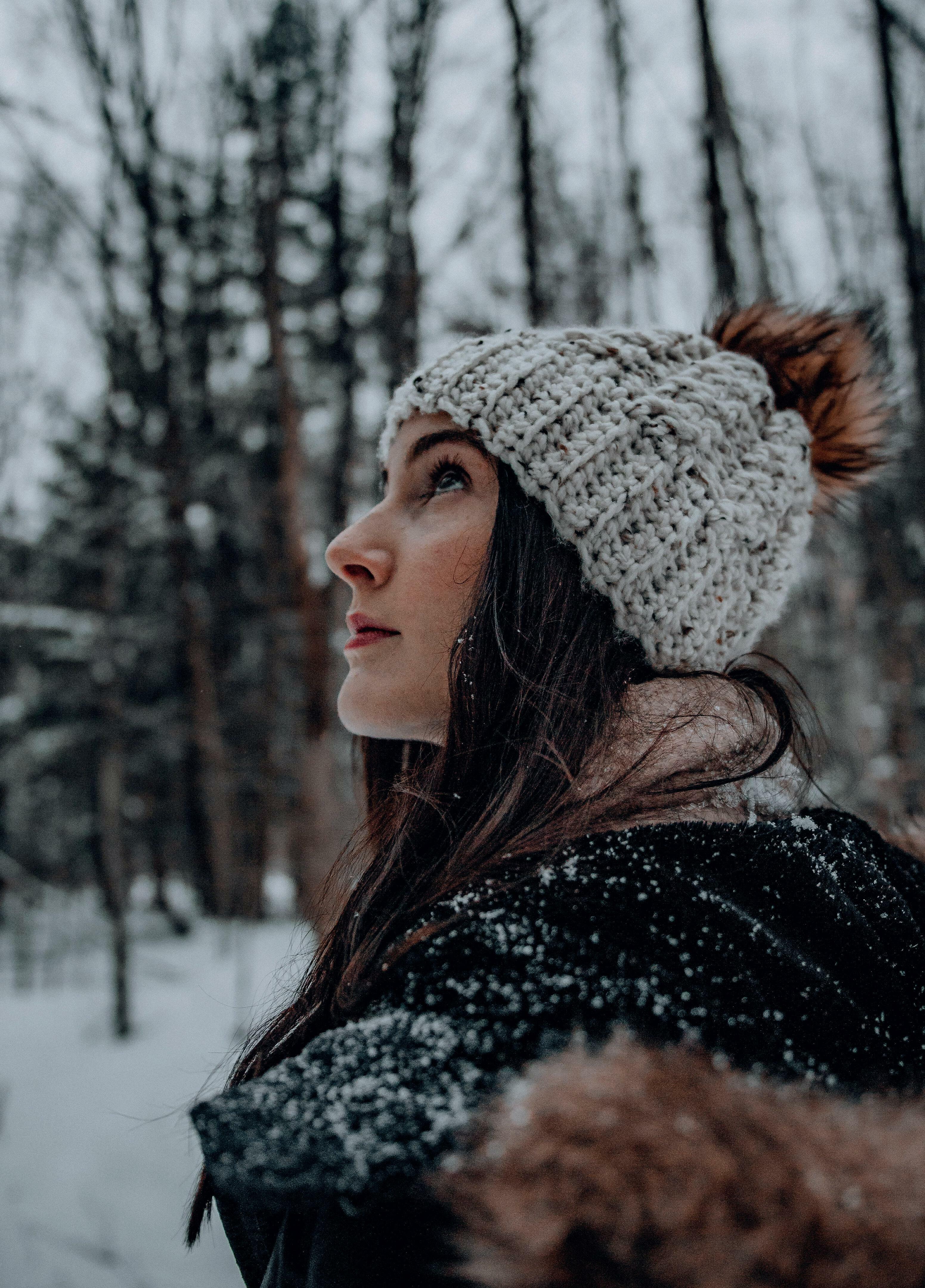

66
' IMAGE: UNSPLASH/TAISIIA SHESTOPAL
Barefoot in the morning
GROUNDING
I’m about four months into a new ritual of a morning grounding practice that I started in the late summer.
Every morning, I step into the garden barefoot, sometimes with my cup of tea, sometimes without. I stand with my feet firmly on the grass, close my eyes and simply try to feel the connection between my body and the ground. While I stand there, I try to feel into the energy of the earth, imagining it thrumming with life, a steadying, vital force from below. And I imagine the energy of my body too, tight with nerves or to-do lists.
And, as I listen to the sounds of the birds, the rain on the leaves, the creak of the trees, I try to imagine that frantic pace slowly leaving me, replaced by the earth’s innate calm, holding me. I stand there until I am completely still, not swaying or moving, having found my balance, having grounded myself, noticing the stillness that has come over me. It’s a simple practice. It only takes five or ten minutes. Some mornings, it’s easier to drop into that place than others. But I can feel the habit slowly
starting to form, the practice of being able to connect more deeply each day.
Grounding is a wonderful, and simple, way to ensure you have plenty of time outside, especially as it grows colder and darker. ‘Gravity holds our bodies to the earth and grounds us with its negative magnetic electrical frequency of around 7.8 Hz,’ explains Kelsea Anderson, writing for charity TreeSisters. ‘By connecting our bare feet with the earth, our bodies are recharged with healing “earth energy”.’
Grounding can help us heal and offer a release from illness and injury, exhaustion, inflammation, arthritis,
weight issues, depression, chronic pain and more.
To ground yourself in the simplest way possible, simply stand on the earth – in your garden or out walking, barefoot. Stand as still as you can and try to really feel how the soles of your feet feel. Focus on the steady pulse from the earth. Follow that feeling along the tops of your feet, your ankles and legs, feeling the earth’s energy moving through you. ‘Visualise your feet “rooted” in the earth and gently sway your body like a tree, noticing the gravity that connects your body to the earth,’ says Anderson.
If you want to add movement to it, stand with your arms facing outwards, breathe in through your nose as you raise your arms up over your head and then, as your hands meet, hold the breath for four counts as you rise up onto your toes. Then breathe out slowly as you turn the hands outwards and lower the arms again and bring your feet slowly back down until they're flat. You will wobble at first, but you will get stronger. »
SLUG HERE
Emma Johnson I try to imagine that frantic pace slowly leaving me, replaced by the earth’s innate calm, holding me
Natural nourishment for body and mind
FORAGING
Katie Scott
When the gentle but unmistakable waft of wild garlic hits my nose as I wander down our driveway, I know that summer is on the way – despite the mud. Swirling leaves, rosehips and falling apples mark autumn; as does the quiet delight I get discovering courgettes nestled among prickly leaves in my raised beds after the bright bloom of yellow flowers.
I grew up in a village and so have always picked blackberries, foraged sloes and made hundreds, if not thousands, of apple pies and apple crumbles. In the early summer, I went foraging with Fern Freud, whose knowledge of plants is encyclopedic, and whose book Wild Magic will be published in February 2023.

It was a day of slow wandering and seeing many tiny plants that I have never noticed before. The abundance was stunning. Many of the plants have been used medicinally for centuries – plantain balm for cracked hands and nettle stings; lavender, wild chamomile, mugwort and lemon balm for sleep. We ate nettle cake and talked about the power of these plants to heal and the little-known folklore that speaks of their magic.
It was a day in the sunshine in which I felt enlivened by the vivid colours around me, awakened by the tang of green leaves as we nibbled on our discoveries and comforted by the warmth of the sun and the conversation.
As we move into rainy days, cold winds and dark nights, I have noted how the seasons are marked by changing moods and changing energy levels. ‘No matter how far from the Earth’s natural cycles modern society may pull us, our bodies respond to seasonal change on every level. If we try to deny the fact that
we naturally slow down for winter, for example, we can easily burn out,’ says Freud.
She has noted a rising fascination with not only foraging but also the rituals that punctuate the harvesting calendar. ‘I like to think of these purposeful and slow activities as “gateway” rituals. Many have come through the gate and are looking to see what else is growing in the garden.’

While not all of us will head to Stonehenge to mark Samhain or rise in the dark for the Vernal Equinox, rituals such as apple picking, carving pumpkins,
drying seeds and planting seedlings mean that we place our hands in the soil. They also ground us – these are the rituals that have been carried out at this time of year, in this very place, for centuries.
Now, as I walk, I can smell the damp leaves and hear the squelch of saturated soil. The last of my autumnal harvest sits in the fridge while evergreen branches – with the odd shock of colour from a berry – adorn my vases. Mornings are harder now in the dark and cold, but evenings are cocooning and drowsy. I will try to slow down over winter, despite the joyful chaos of Christmas, and take stock before the rituals of planting and tending in spring begin. As the seasons change, so too do my needs and so too what nature can provide. Accordingly, the rituals around growing and foraging change throughout the year. As Freud says: ‘Rituals allow us to listen to the changes that are happening within us and around us, so we can live in harmony with the Earth’s cycles.’
68

WELLBEING
IMAGE: PEXELS/AMINA BOUZIANE ERRAHMANI, UNSPLASH/KIER IN SIGHT, ANNIE SPRATT

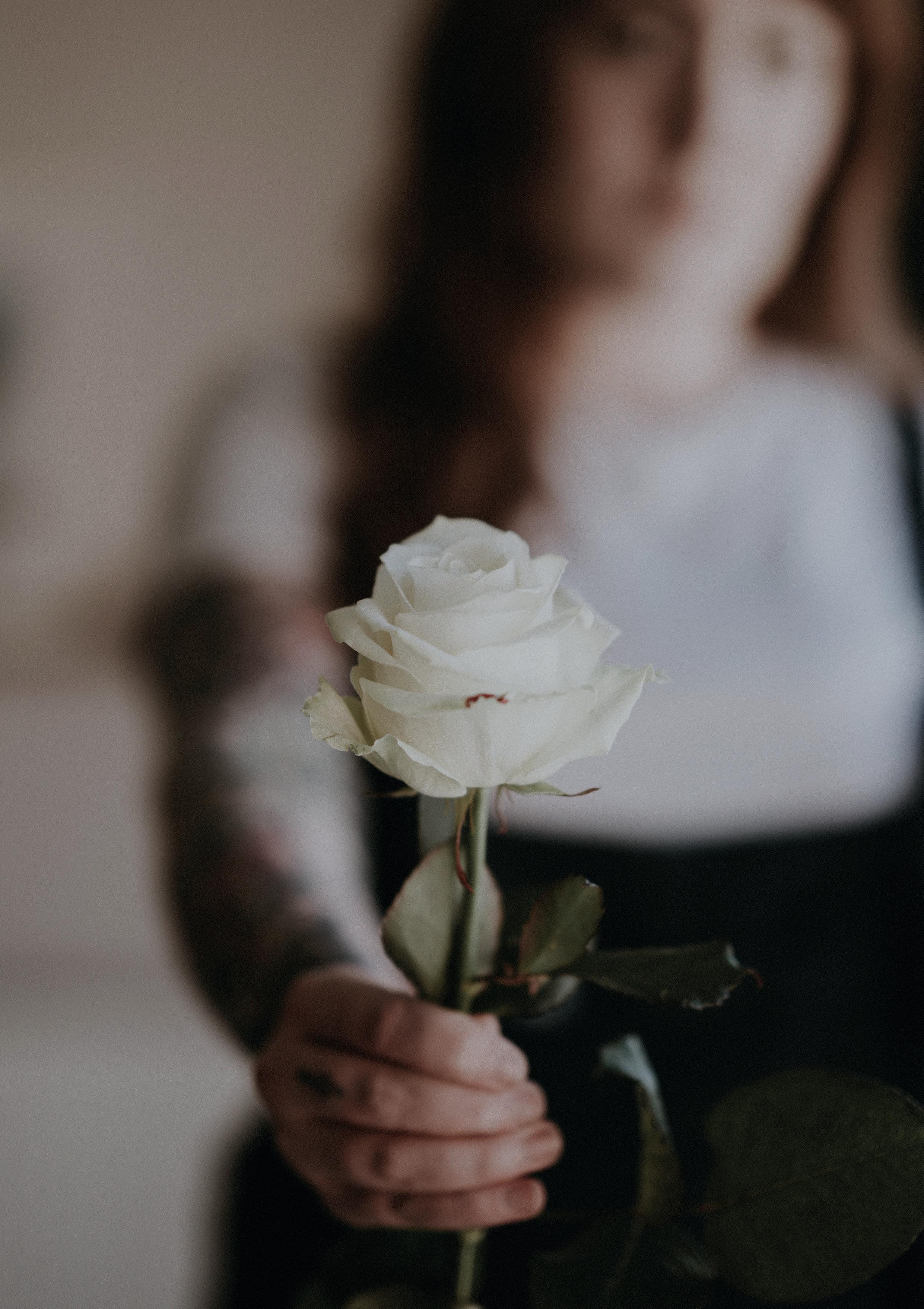
E.B. White (Charlotte’s Web)

‘Why did you do all this for me?’ he asked. ‘I don’t deserve it. I’ve never done anything for you.’ ‘You have been my friend,’ replied Charlotte. ‘That in itself is a tremendous thing.’
IMAGE: UNSPLASH/ANNIE SPRATT
SILENT NIGHT
When you flick off a switch, or turn off the radio, the quiet night reveals itself. Luciana Bellini

looks at how silence and darkness can hold a unique space for us to explore our inner, and outer, worlds…

SEASONAL LIVING
If you were to take a straw poll to find out which of the four seasons would be crowned the favourite, it seems unlikely that winter would come out on top. Those dark, fallow months tend to get a bad rap in popular culture, eschewed in favour of the luscious abundance of spring, the sun-dappled haze of summer or the showy splendour of autumn. Few appreciate the quiet beauty of this season, the magic and wonder that comes from embracing the hushed darkness and transformative solitude. All too often the winter gloom is seen as something we have to endure – we grit our teeth and push through until we see the lighter days of spring on the horizon. But the time has come to embrace that inevitable darkness, and to discover all that it can offer us.
Throughout our lives, we are conditioned to seek out the light, but there is a different, almost otherworldly power that comes from harnessing the dark. ‘In the dark, I can almost sense gravity,’ wrote the author Tamsin Calidas in a recent article on the beauty of winter. ‘The skies above are vertiginous and vast. I feel both my fragility and my strength.’ Those cold, clear skies, which give way to frostbitten dawns, are filled with enchantment. For author of Under the Stars: A Journey into Light, Matt Gaw, the darkness offers both expansion and contraction: ‘It’s strange really, in some ways your world is made smaller – you operate in this reduced bubble of visibility – but in other ways it is infinitely bigger. At night, you experience not only space, but time… The light from the stars has often been travelling for thousands of years before it reaches your retina,’ he told journalist Loughrey in a recent interview.
In a world where so many different factors are competing for our attention, the simple act of going outside on a dark night and gazing up at the skies has almost been forgotten. Our ancestors used stargazing as a way to find their way in the world, a skill that has been largely replaced by smartphones and GPS. Indeed, we’re now so constantly barraged by light and noise and technology that even having access to unadulterated skies has become a rare commodity. And yet there is much to be gleaned from enveloping yourself in that inky blackness. ‘On winter nights, I often sit out… gazing at the vast, dark, velvety skies, punctuated by glittering constellations,’ writes Calidas. ‘When I am stargazing, I take a homemade oil lamp – a soft-burning taper – to irradiate the darkness… Its low light draws that immense space of universe closer… It makes me feel small, childlike.”
These winter months – traditionally a period of retreat and hibernation – provide a sacred time to reflect and reconnect, both with ourselves and with nature. For Gaw, that means taking time to appreciate the majestic mystery of the moon, whose wan light »
74
SEASONAL LIVING IMAGE: UNSPLASH/GUILLE POZZI. PREVIOUS PAGE: UNSPLASH\NATHAN ANDERSON
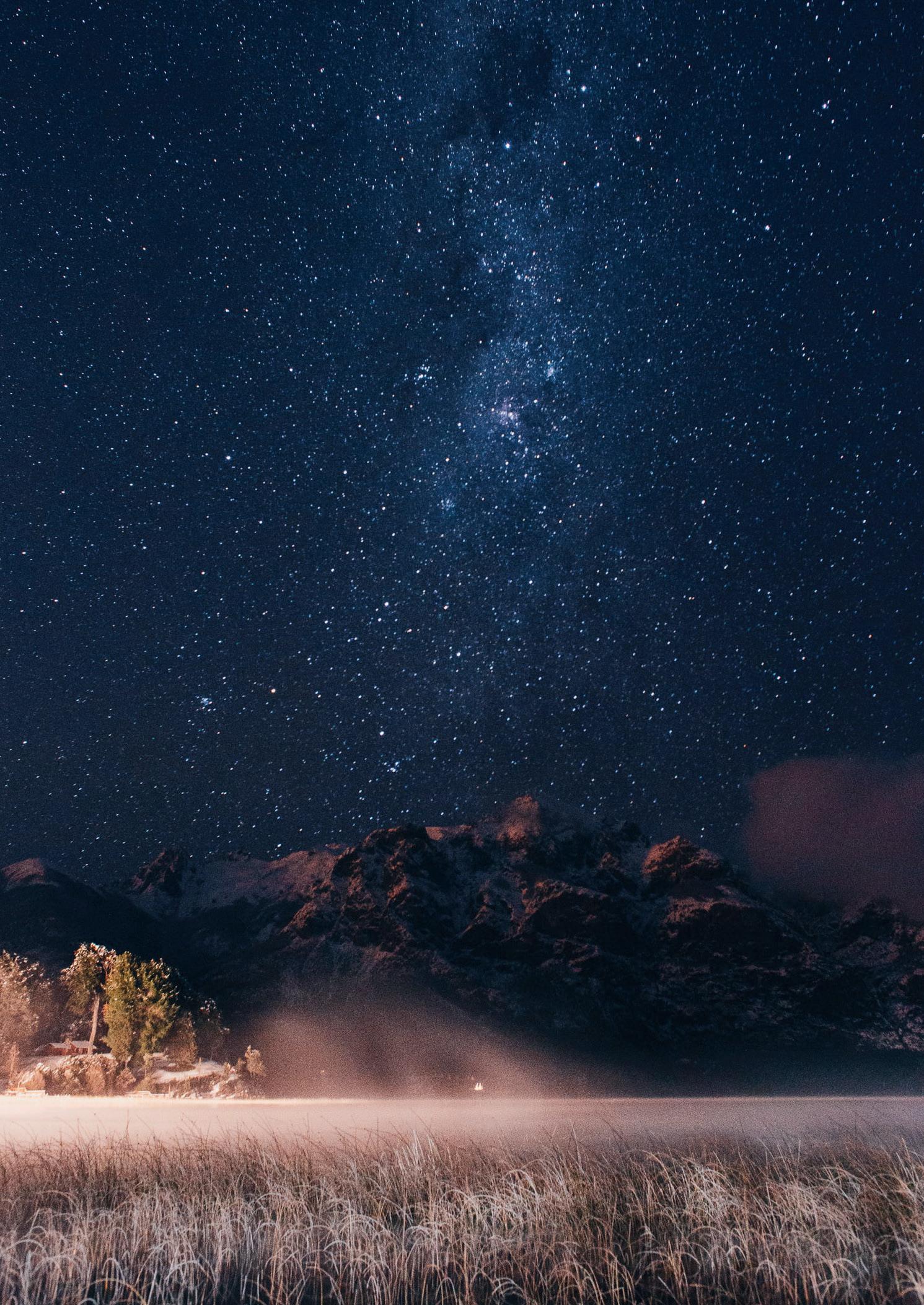
‘I wish I could show you, when you are lonely, or in darkness, the astonishing light of your own being’ HAFEZ

‘For me, silence is not merely about the complete absence of sound; it is also about the ability to find wonder in the everyday.’
illuminates ‘a way beyond nothingness, and the hope of some kind of return’. For Calidas, the season awakens a desire to gather. ‘In the gloaming, I enjoy hosting gatherings with friends around an ancient limestone circle of rocks on the hill of the croft… We wrap up in blankets, singing and softly beating drums as the moon rises. Often, in the stillness after, it feels as if the universe is listening. In the silence, I sense a presence that is inspiring, comforting and reassuring.’
For that is another element we can discover in the tranquility of winter: the power of silence. Amid the pinging of news headlines and the incessant bleeping of devices, moments of true quiet are all too scarce. ‘Silence is essential. We need silence, just as much as we need air, just as much as plants need light,’ writes the spiritual leader and poet Thích Nhat Hanh in his book Silence: The Power of Quiet in a World Full of Noise ‘If our minds are crowded with words and thoughts, there is no space for us.’ For the Norwegian explorer Erling Kagge, silence is intrinsically linked with wonder. ‘The world’s secrets are hidden inside silence,’ he writes in Silence: In the Age of Noise. ‘For me, silence is not merely about the complete absence of sound; it is also about the ability to find wonder in the everyday.’
Yet for some, embracing silence can be an uncomfortable practice. Too much room for thinking and reflecting, not enough distractions. What might you uncover if you sat in perfect stillness and truly listened? ‘Silence is the opposite of scrolling, sharing and clicking,’ notes Kagge. ‘It’s about getting inside what you are doing. Experiencing rather than over-thinking. Allowing each moment to be big enough.’ While it may seem daunting, those moments of potential discomfort can lead to astonishing rewards. ‘All the wonders of life are already here,’ writes Thích Nhat Hanh. ‘They’re calling you. If you can listen to them, you will be able to stop running. What you need, what we all need, is silence. Stop the noise in your mind in order for the wondrous sounds of life to be heard.’
Of course, silence is not a new concept – it is something deeply human, a biological need we have all had for thousands of years. Harnessing silence can be used as a way to rest our over-stimulated nervous system and to help it deal with the constant flow of information and sound that we experience every day. These periods of quiet help us to restore our cognitive resources, as the energy we normally use for external communication is channelled inwards. Silence feeds our imaginations and enhances concentration. When used in conjunction with mindfulness practices, it can allow us to reach ‘inner silence’, where we’re able to observe and process even the most difficult and uncomfortable of thoughts. There are few things more vital to our emotional and physical wellbeing than the silence of a quiet mind.
77 SEASONAL LIVING
IMAGE: UNSPLASH/NATE RAYFIELD
Gloria Naylor

‘Sometimes being a friend means mastering the art of timing. There is a time for silence. A time to let go and allow people to hurl themselves into their own destiny. And a time to prepare to pick up the pieces when it’s all over.’
IMAGE: UNSPLASH/BECCA TAPERT



A WINTER’S TALE
Embrace the dark days of winter with rich, luxuriant beauty and skincare. As the nights grow longer, lift your spirits with the season’s latest indulgent launches to nurture, heal and add a splash of colour.
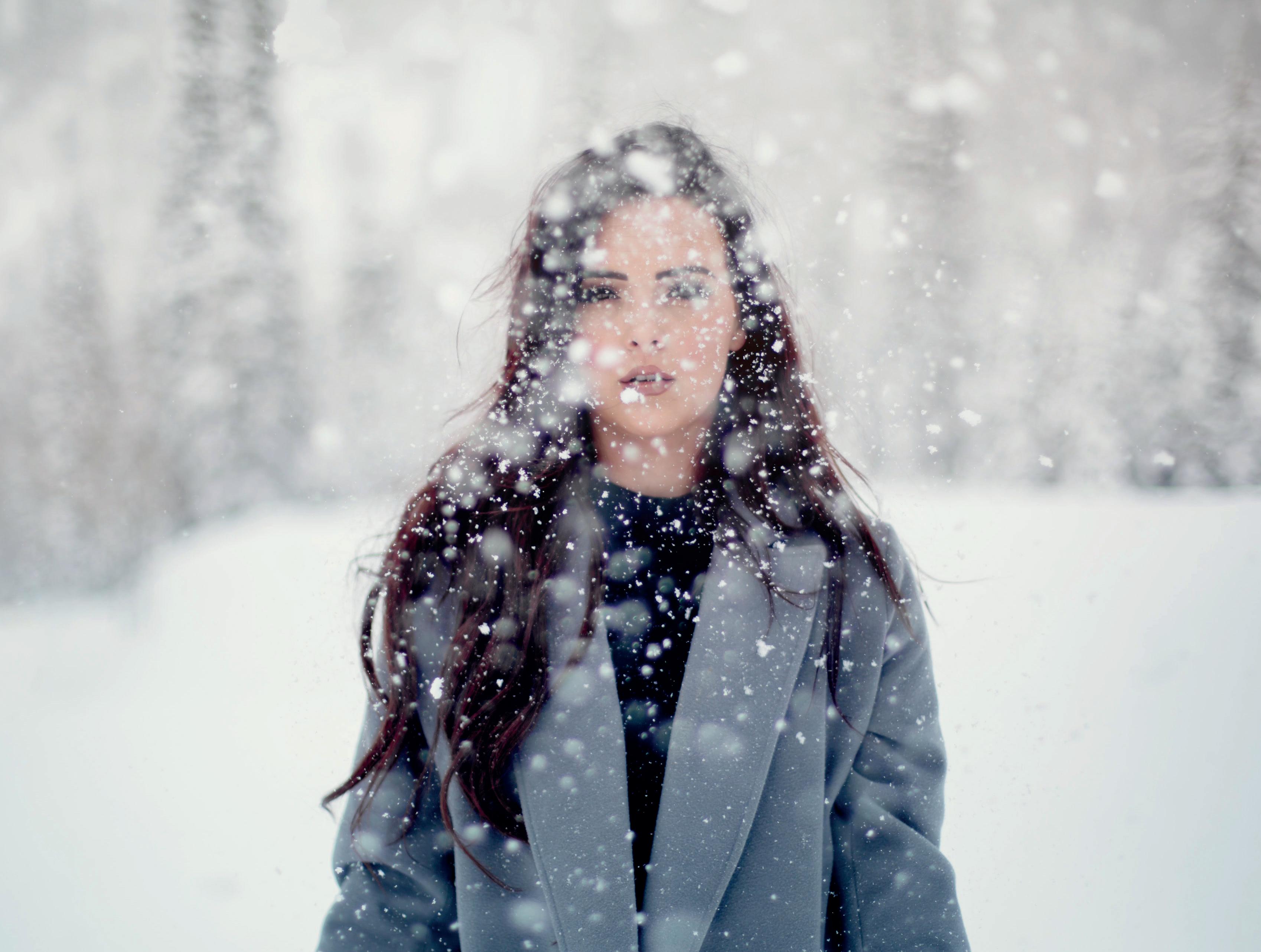 By Claire Brayford
By Claire Brayford
81
BEAUTY
IMAGE: UNSPLASH: SIMON BERGER, TONY ROSS
1 THE LIP COLOUR
Glazé lip lacquer, £28, Code8




For those days when you awake before it’s even light, a dash of colour can be a real beacon in the gloom. And one new lip lacquer that you could almost apply in the dark is Code8’s Glazé collection. Featuring eight flattering tones, including nude pink, dark plum, chocolate mauve and classic rosewood, it has a precision applicator that allows you to sweep on the non-sticky gloss in seconds. We love that the highly pigmented colour leaves lips beautifully hydrated. It melts on for an irresistible pout.
2 THE BLUSH
Cream Blush, £28 for a refill, Kjaer Weis
There is nothing like a hint of blush to wake wan winter skin, and the pride and joy of sustainable, organic beauty brand Kjaer Weis is its cream blush. In 13 shades, it melts into the skin with a dewy touch of colour. New to the list are ‘Inner Glow’, a light and rosy taupe, and ‘Blushing’, a deep coral with an iridescent sheen. Featuring a certified organic formula, with sweet almond seed oil and rosehip seed oil for moisture and antioxidants, plus gardenia florida extract to ward off free radicals, it is nourishing as well as lightweight and long-wearing. More blendable and hydrating than powder, it can also be used on eyes, lips and cheeks.

3 THE SERUM
Alter-Care Serum, £110, STELLA by Stella McCartney

When it comes to conscious beauty, the most anticipated launch this year was STELLA by Stella McCartney’s new rich, responsible skincare. The hero is the multi-tasking, vegan Alter-Care serum, featuring 99 per cent natural-origin ingredients. It took two years to perfect and it is easy to see why – the result is so effective. Perfect for winter-proofing your skin, the formula boasts olive squalane to actively support and reinforce its barrier, lingonberry extract to visibly improve tone and texture and organic rock samphire extract, rich in fatty acids, to deeply nourish and renew. It’s so potent it can even be used as an eye cream – just dreamy.

4 THE CANDLE
Perfect Peace candle, £48, Neom What more do you need on a dark December night than Neom’s new Winter Wellbeing Wonders range? It’s filled with limited-edition fragrances, in candles or essential oils, that are focused on making you feel good, de-stressed and happy. The options include the festive ‘Christmas Wish’, boasting fruity mandarin, spicy cinnamon and comforting tonka bean; enveloping ‘Cosy Nights’, crafted with calming sandalwood, frankincense and nutmeg; and ‘Perfect Peace’, with its uplifting, head-clearing scents of pine, myrrh and zesty lime peel for a fresher, more Nordic take. It’s time to breathe deep and drift away.
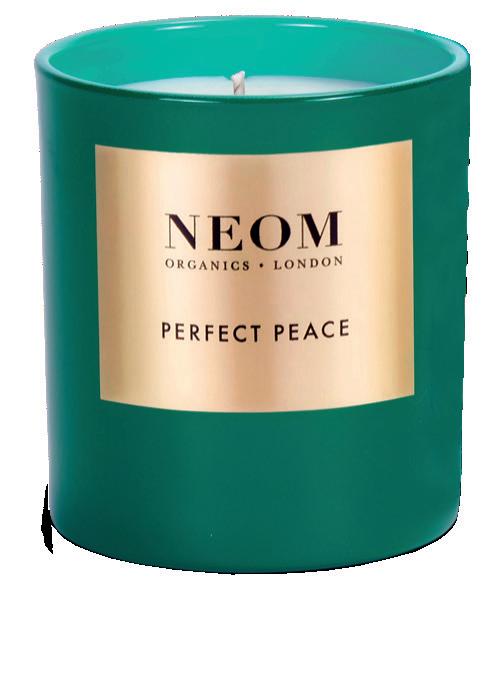
5 THE SHOWER CREAM
Shea Green Chestnut Shower
Cream, £17, L’Occitane

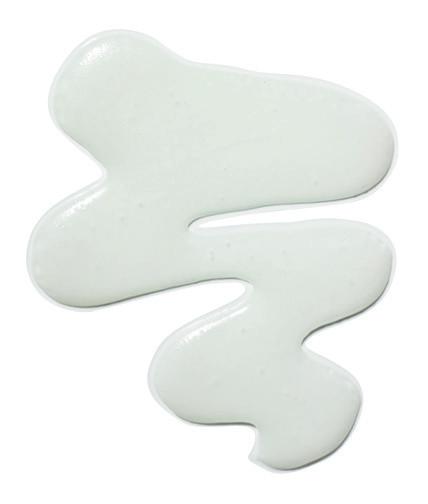
The simple shower is such a valuable moment devoted to yourself, whether it’s time away from the children or a soothing space for calm before bed. L’Occitane has created a limited-edition winter collection to transform your favourite at-home routine into a spa-like experience. Our favourite is the new musky Shea Green Chestnut collection. Envelop yourself in the scent of warming chestnuts with sweet vanilla to soothe and keep your skin intensely nourished. The brand compares it to wrapping up in a blanket by the fire after a crisp winter walk – we’ll take it.
6THE FRAGRANCE
L’Iris Eau de Parfum, £140, Officina Profumo-Farmaceutica di Santa Maria Novella
The citrus-based scents of summer are wonderful to wear but, as the days draw in, it’s good to switch to warmer, more atmospheric notes. Winter perfume is a wonderful way to add a dash of drama, even if your outfit is low key. The most exciting, statement-making new fragrance is Officina ProfumoFarmaceutica di Santa Maria Novella’s first eau de parfum. Celebrating the iris, the floral symbol of Florence, it blends neroli, pepper, geranium, jasmine and magnolia – just one spritz tells a tale.

82
1 2 3
5 6
7 THE CREAM
The Ultimate Soothing Cream, £205, Augustinus Bader



The latest from the breakthrough skincare brand, the Ultimate Soothing Cream from Augustinus Bader promises to instantly breathe life into dull, stressed, dehydrated skin. Lightweight and nourishing, it brightens, firms and evens the complexion while boosting collagen production and combating the signs of ageing for immediate and long-term renewal. Use it as a quick complexion reset or as an indulgent overnight mask.
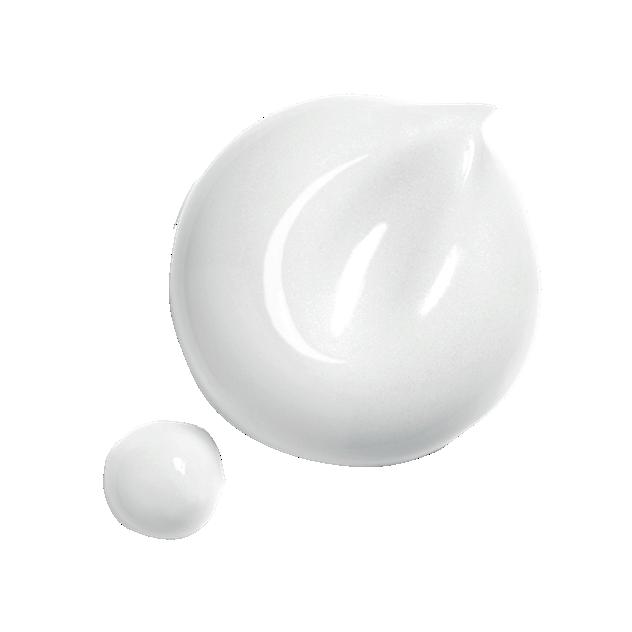
8
THE EXFOLIANT
Exfoliating Enzyme Mask, £90, Sisley


As it gets colder and the wind starts to bite, so our skin begins to flake. Central heating and hot showers don’t help but, thankfully, Sisley’s new Exfoliating Enzyme Mask restores the skin’s purity and freshness without any harsh abrasion. The transforming hybrid powder exfoliates using natural enzymes that act on the bonds between dead cells rather through friction of micro-particles. It removes dry skin, make-up, excess sebum, urban pollution and impurities that suffocate. The result is an instant radiance boost and more even skin tone. It really is a winter essential.
9 THE MASCARA
Lash Lengthener 38°C, £31, Sensai
We fell in love with Sensai mascara that could be washed off at 38°C when it first launched 25 years ago. Now the brand has just released a groundbreaking new glossy formula that provides even more high-impact length and separation but is just as easy to remove. Stretching lashes so they are shaped and dressed in a glossy intense black, the customised brush catches even the shortest hairs and coats and separates them out for a glamorous, fanned-out look.


7 8 9
10
THE TEA
Chaga Mushroom Powder, £29 .99, Dirtea


When it comes to the transformative power of superfoods, mushrooms are currently at the forefront. Proven to improve cognitive health, relieve stress and prevent brain ageing, they deliver countless benefits, especially at this sluggish time of year. Dirtea’s range of mushroom extract powders, coffees and cacao superblends are one of the most potent ways to harness their power. One teaspoon of the Chaga Mushroom Powder contains the same number of antioxidants as 600 blueberries. It is jam-packed with skin-nourishing goodness, rich in beta-glucans and can also fortify your immune system, providing a natural energy boost and giving your skin a healthy glow.
11THE HAND CREAM
Moonlight Mesa Hand Cream, £35, Twentynine Palms
9
Giving your hands the same attention as your face in the cold months is a great self-care ritual to get into the habit of – and an exciting new launch with an incredible hand cream is Twentynine Palms. Created by Oscar-winning actor Jared Leto, the new 11-product, gender-neutral beauty range is inspired by the name of a city in the Mojave desert. Certainly, its nourishing hand cream is a lot like a quenching oasis. Teeming with fatty acids and botanical extracts, with a subtle, earthy scent of vetiver and bergamot oils, it allows you to take care of your hands in the most natural way.
12THE BATH SOAK
Sleep Salt Soak, £15, Aroma Active
The natural healing power of a ritual bath has been harnessed for centuries. We can all practise better self-care with a simple nightly bathing routine to wind down, relax and soothe the muscles but also clear the way for more soulful transformations. Aroma Active’s Sleep Salt Soak boasts deeply soothing scents of calming lavandin and ylang ylang essential oils, along with gently sedative hops to relieve anxiety and valerian to induce sleep, as well as Epsom salts and magnesium to relieve tension and promote muscle relaxation. Simply take it slow and soak for at least 20 minutes to maximise the healing benefits.

83 BEAUTY IMAGES: SHUTTERSTOCK.
11 12
PAUSE FOR THOUGHT
From comfort zone to growth zone
It's time to find our courage. Learning takes place in the stretch zone, explains Dr Asma Naheed
Life offers many opportunities to step out of one’s comfort zone, but it can be challenging to do so. We all want to grow up and be successful in life. Most of the time, it is not our lack of knowledge that holds us back but our state of mind. In the 1990s, the phrase ‘leaving your comfort zone’ became popular. The term ‘comfort zone’ was coined by management consultant Judith M Bardwick in her 1991 book Danger in the Comfort Zone.
In 2006, Ryan and Markova developed a theory about the learning process. They distinguished between different zones – comfort, stretch and panic.
The first is defined by a lack of fear or discomfort. A person feels safe in the comfort zone. All things are familiar. Within this zone, there is no need to embark on a learning process. Since individuals are not challenged, there is little reflection or development. Things remain the same. Some people prefer to live in a risk-free, fuss-free routine.
At the other end of the scale, panic zones overwhelm us because the challenges are so far from our comfort zones. This zone is defined by stress, anxiety and challenges in ways that make learning impossible, as the focus is on, for example, the fight-or-flight response. All our energies are spent managing and controlling fear and panic. The longer a person stays in this zone, the less likely they are to test their limits, preferring instead to
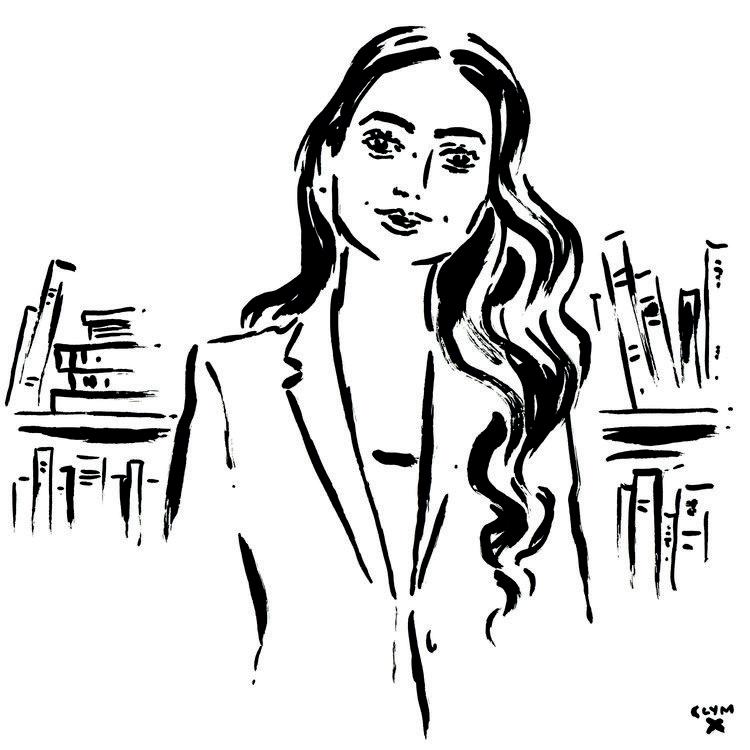
84 SLUG HERE
go back to their comfort zone.
In contrast, learning can take place in the stretch zone. It is a zone where you can expand your potential, work on self-development and explore your limits. When people feel they can’t control or handle a situation, they may retreat into their comfort zone. However, working or studying in this zone expands your comfort zone and allows you to grow accustomed to new experiences.
We need to remember that each individual’s threshold for different zones is personal and may change depending on the situation. Driving the learning process and forcing people into specific zones is to be avoided. Otherwise, it might not be possible to achieve the individual ‘stretching’ of an individual.

85
IMAGE: PEXELS/IVAN SMAKOV
Dr Asma Naheed PhD is an educational psychologist and life coach who specialises in therapeutic and behaviour management
Tetyana Denford

‘What do you want from me, I asked. Everything you’re not prepared to offer, grief said. And so, we sat quietly, listening to the noise of our rabbit hearts, and gave our stories to each other.’
IMAGE: PEXELS/VLADA KARPOVICH
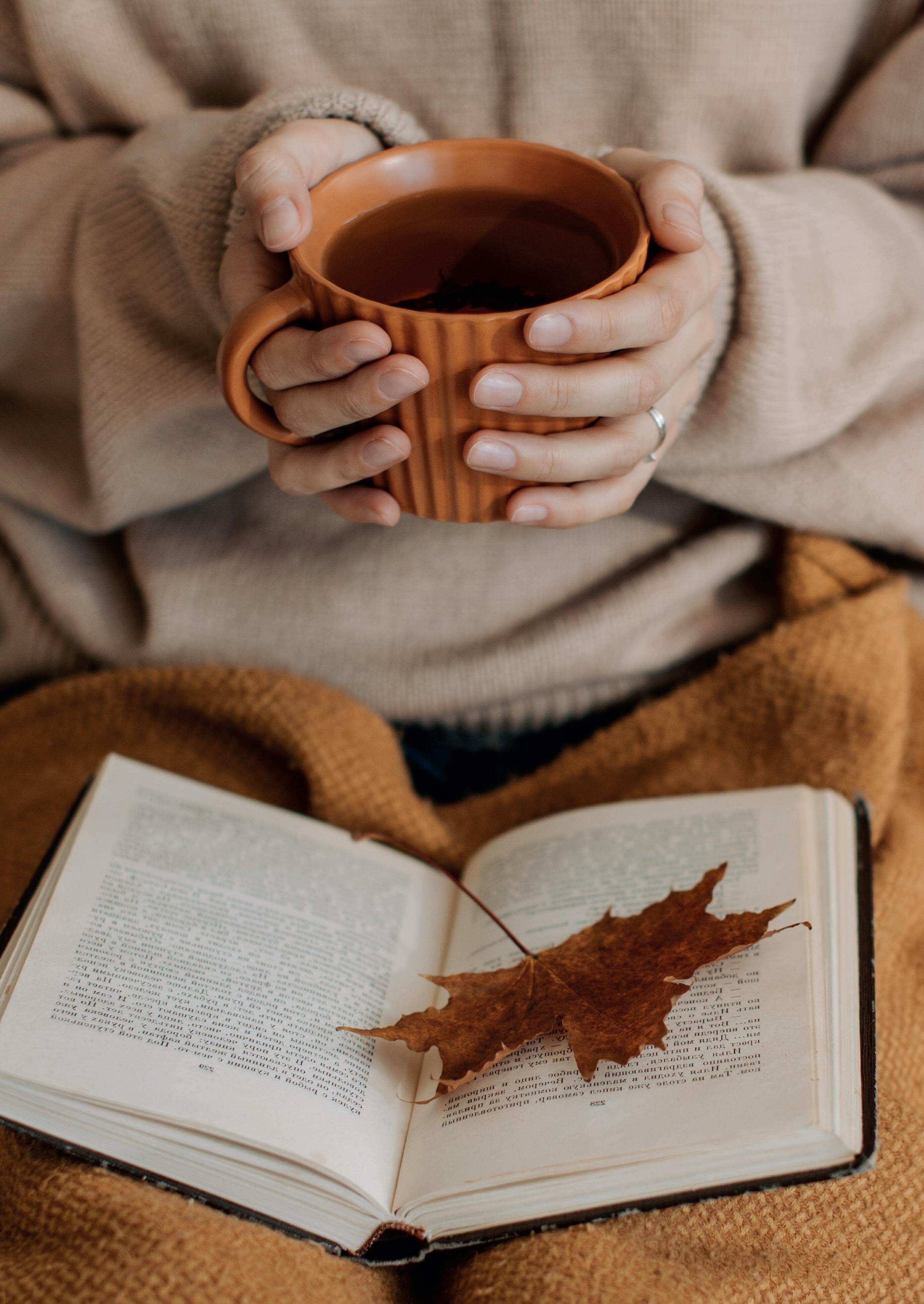
UNBROKEN
A fine line between chaos and change
When you stop fighting change, you see the beauty in acceptance, says Najla al Tenaiji

When it comes to life-altering experiences, people rarely speak about the state of limbo you stumble upon during the uncertainty of your condition. Yet, you can take advantage of this perilous state, whether you have no control over your situation or just because you’re lost for answers.
Trauma of any kind can consume our energy, vibrancy, and even our personalities. Trauma tends to leave a mark, whether from childhood or during your formative years. It becomes a part of you, whether you’re willing to accept it or not. At a certain point, you must realize you cannot fight your trauma from being ingrained in you, but you have to accept the changes it has molded in you.
You might never see things the same or feel the same way about something you once loved. But this is all a part of the change brought upon us due to our circumstances. When you stop fighting change, you see the beauty in acceptance.
Trauma denial can be used as a shield to guard us emotionally and mentally after trauma. But it doesn’t allow us to heal and fully acknowledge our pain.
Facing your trauma can be surprisingly rewarding. It can allow you to step forwards towards acceptance, merging parts of your past into you, so you feel more whole.
I have been in recovery since 1999, and I truly believe
88 SLUG HERE
that until you acknowledge and recognize trauma for what it is, you deny your own experience. It isn’t easy, and you will feel like you’re taking steps backward instead of forwards, but it’s crucial to remember recovery isn’t linear. There is no assessment, standard or pace on which you should base your healing journey. Look for the light and tread slowly, and you’ll find the parts of yourself you are looking for again.
Najla Al Tenaiji suffered a lifechanging injury in 1999 and has since been using her recovery to inspire others through their own journeys

89 SLUG HERE
Look for the light and tread slowly, and you’ll find the parts of yourself you are looking for again
IMAGES: PEXELS/MARTIN LOPEZ
ST OR Y OF W ISD OM
The boy and the echo
A simple reminder that our lives are a reflection of our thoughts and actions
This is the story of a father and his young son who were walking through the mountains. Suddenly, the son fell, hurting his leg on a rock. He screamed ‘AAhhhh!’
To his surprise, he heard a voice, ‘AAhhhh!’
This made him curious. So he yelled ‘Who are you?’ Back came the same words – ‘Who are you?’
Puzzled by these responses, he shouted ‘Coward!’ The same word came back – ‘Coward!’

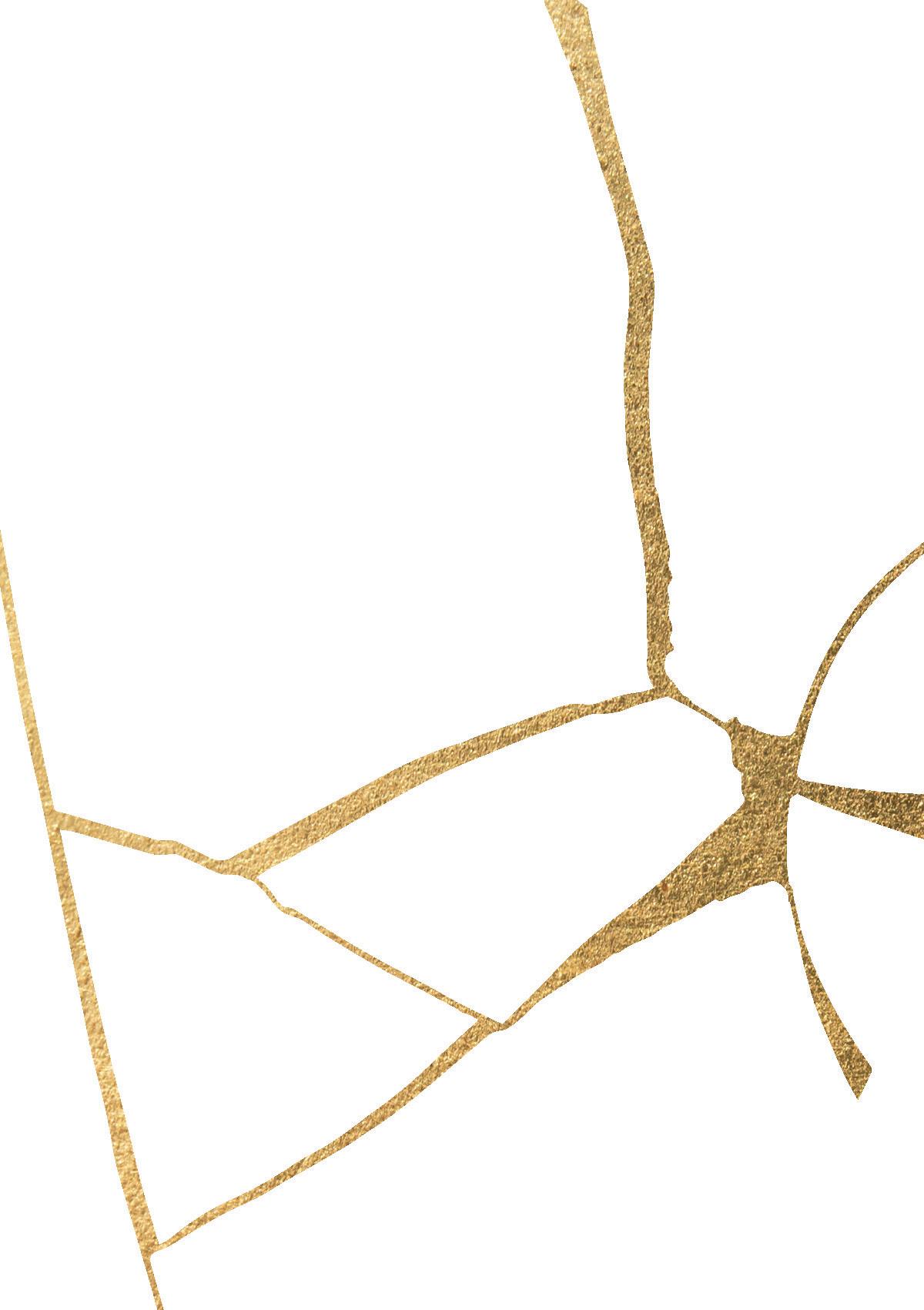
He looked at his father and asked: ‘What’s going on?’ His father smiled and said: ‘Son, pay attention.’
Looking across the valley, his father yelled to the mountain ‘I admire you!’ The voice answered: ‘I admire you!’
Again the man cried out: ‘You are a champion!’ The voice replied, ‘You are a champion!’
The boy was amazed, but also confused. So, his father explained...
‘You are hearing an echo. It’s the sound of our voices bouncing back from the mountains. However, this is really how life works. What you think, say and do returns to you.
If you want more love in your world, create more love in your heart. If you want to be treated with kindness, treat others with kindness
‘Our lives are a reflection of our thoughts and actions. If you want more love in your world, create more love in your heart. If you want to be treated with kindness, treat others with kindness. If you want more competence on your team, become more competent.
‘This relationship applies to all aspects of life. Life will give to you everything you give to it – except life gives you even more in return. Your life is not ever a coincidence. Each moment is a reflection of you.’

The son listened and grew in understanding. Throughout the years that followed, the son witnessed the truth of these words in his life.

 IMAGE: SHUTTERSTOCK
Ernest Hemingway
IMAGE: SHUTTERSTOCK
Ernest Hemingway


IMAGE: UNSPLASH/ELIA PELLEGRINI
‘When people talk, listen completely. Most people never listen.’


Al-Fattah God s name ’
94 SLUG HERE
‘The Opener’ , ‘ The Revealer’ and ‘The Granter of Success’ . He is the One by whose guidance will give victory, open the doors to success and reveal the solutions to all problems.





















 (LITTLE A)
(LITTLE A)

 KIERAN SETIYA (PENGUIN)
KIERAN SETIYA (PENGUIN)
 (PENGUIN)
(PENGUIN)
 STACEY D’ERASMO (ALGONQUIN)
STACEY D’ERASMO (ALGONQUIN)
 JESSICA HUNDLEY (TASCHEN)
JESSICA HUNDLEY (TASCHEN)




 IMAGE: UNSPLASH/TYLER NIX
IMAGE: UNSPLASH/TYLER NIX




 Albert Camus
Albert Camus










 Roy T. Bennett
Roy T. Bennett














 Jeanette LeBlanc
Jeanette LeBlanc


































 By Claire Brayford
By Claire Brayford
































 IMAGE: SHUTTERSTOCK
Ernest Hemingway
IMAGE: SHUTTERSTOCK
Ernest Hemingway




